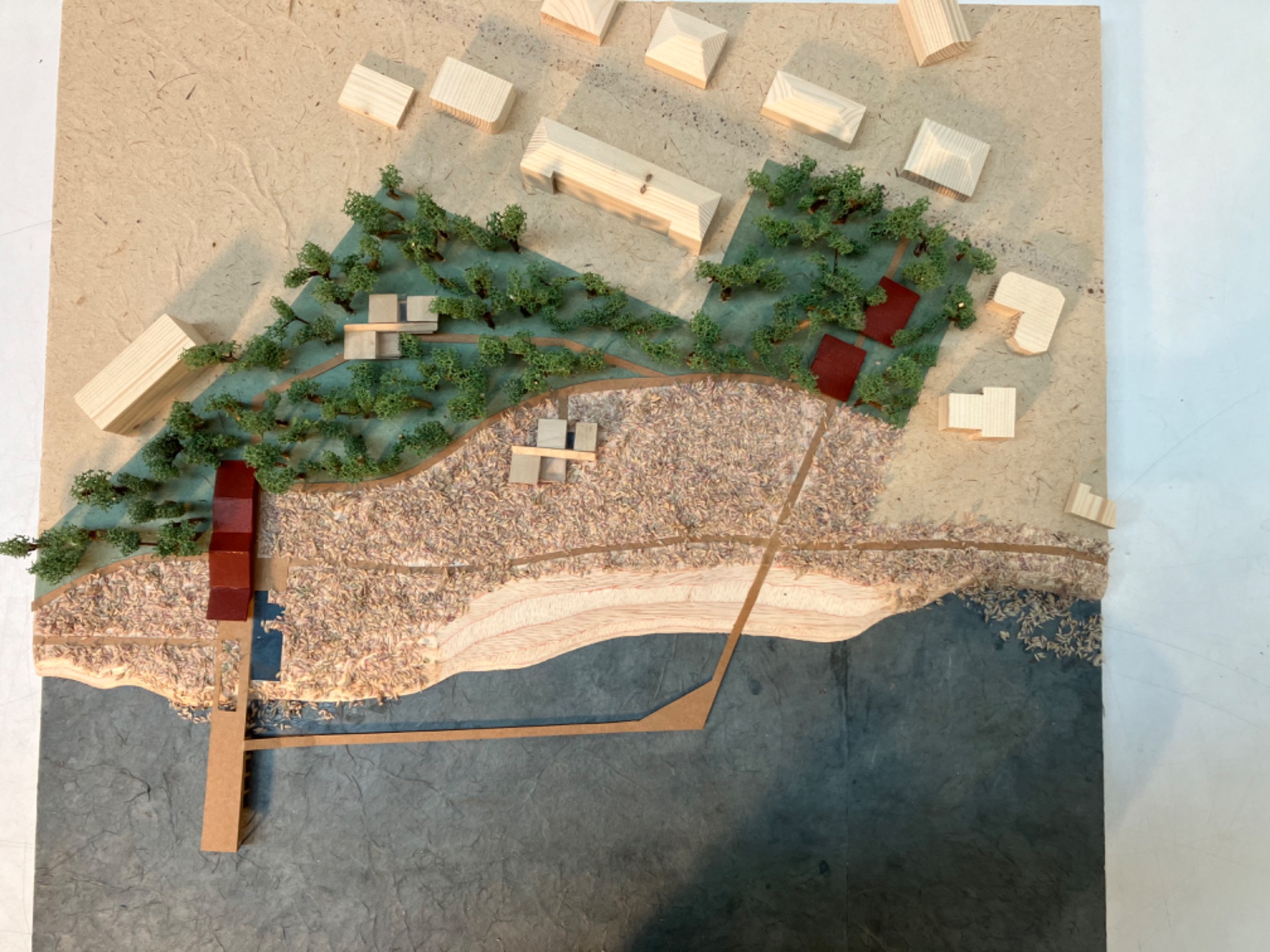
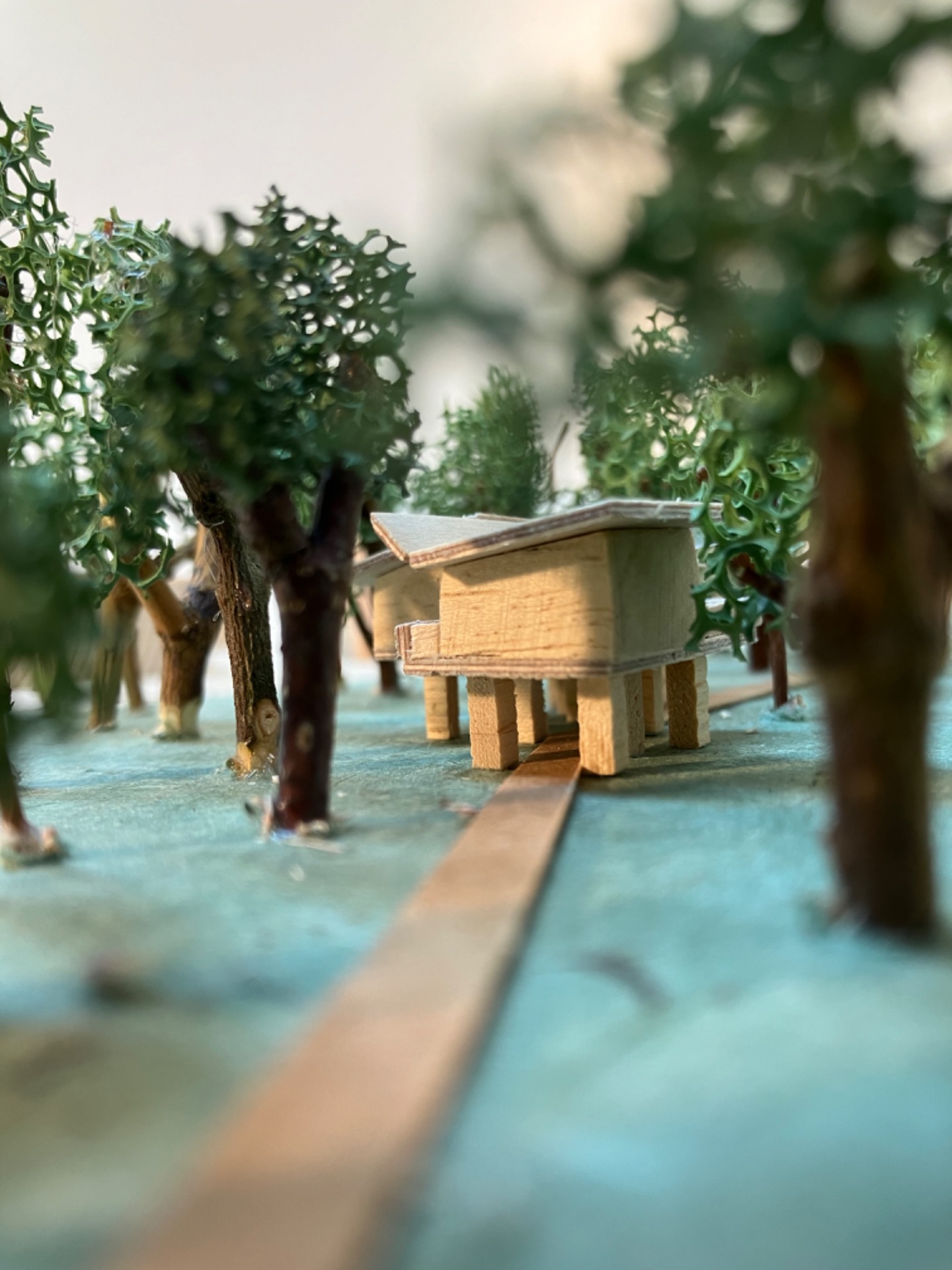
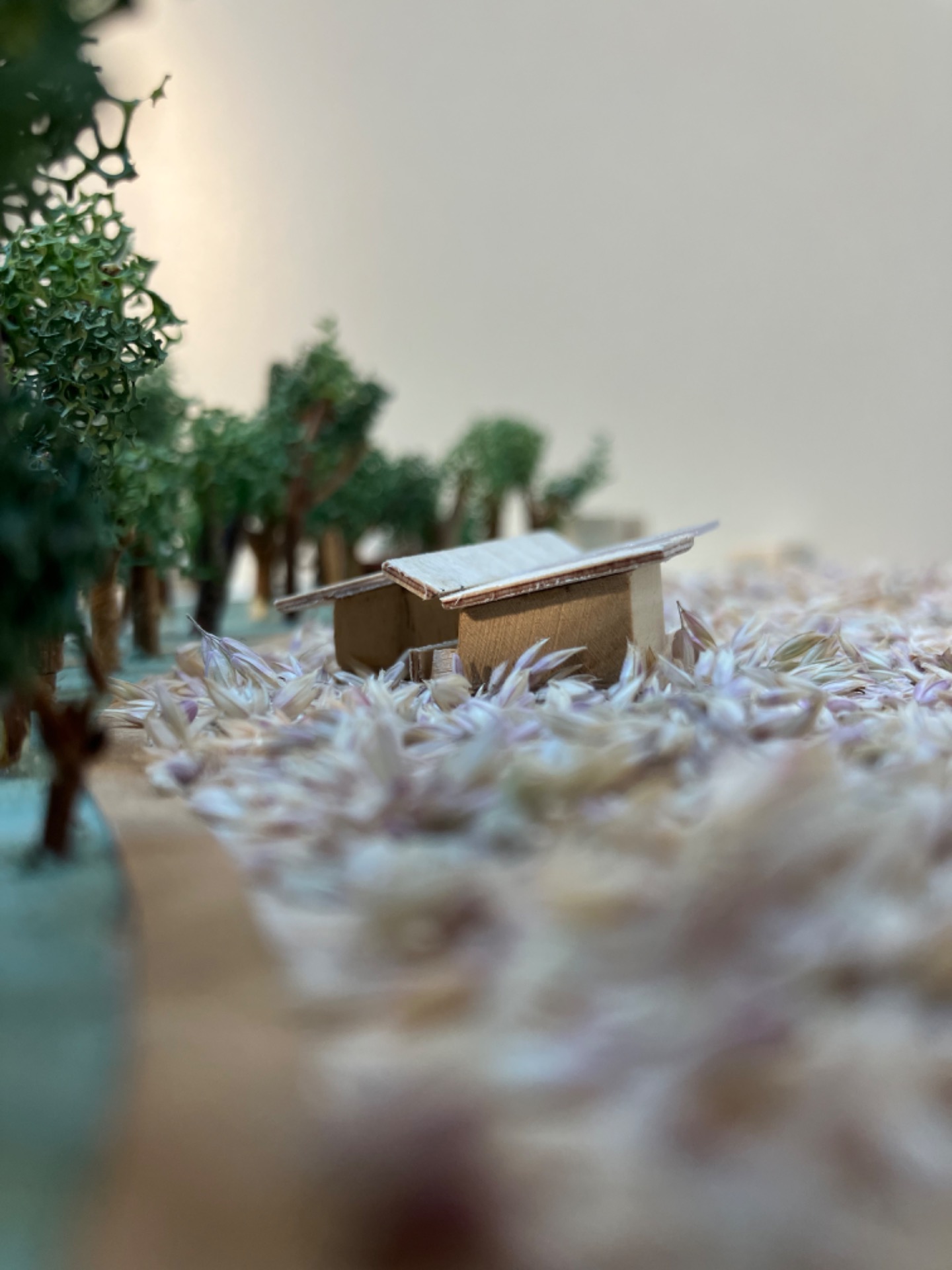
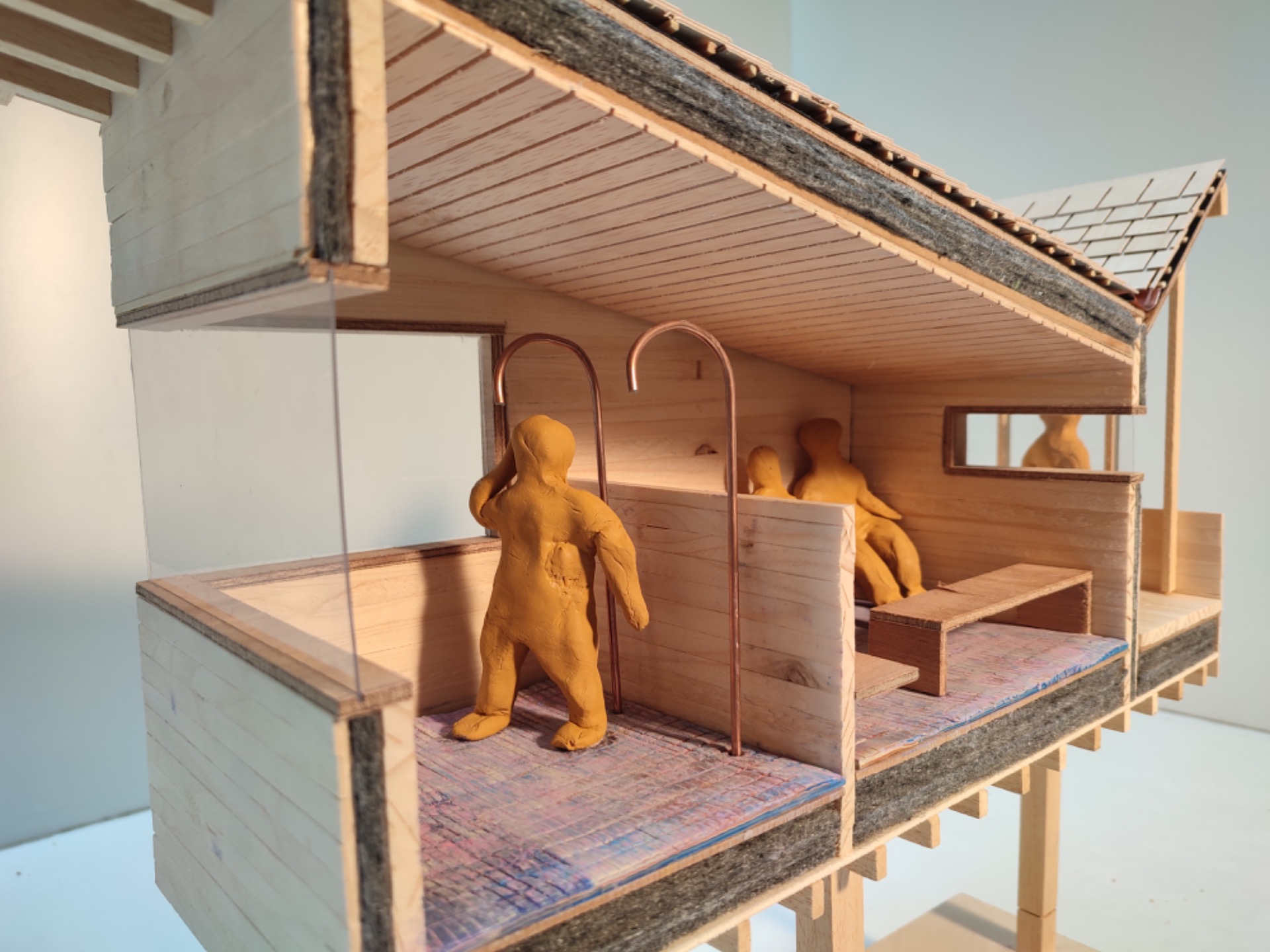
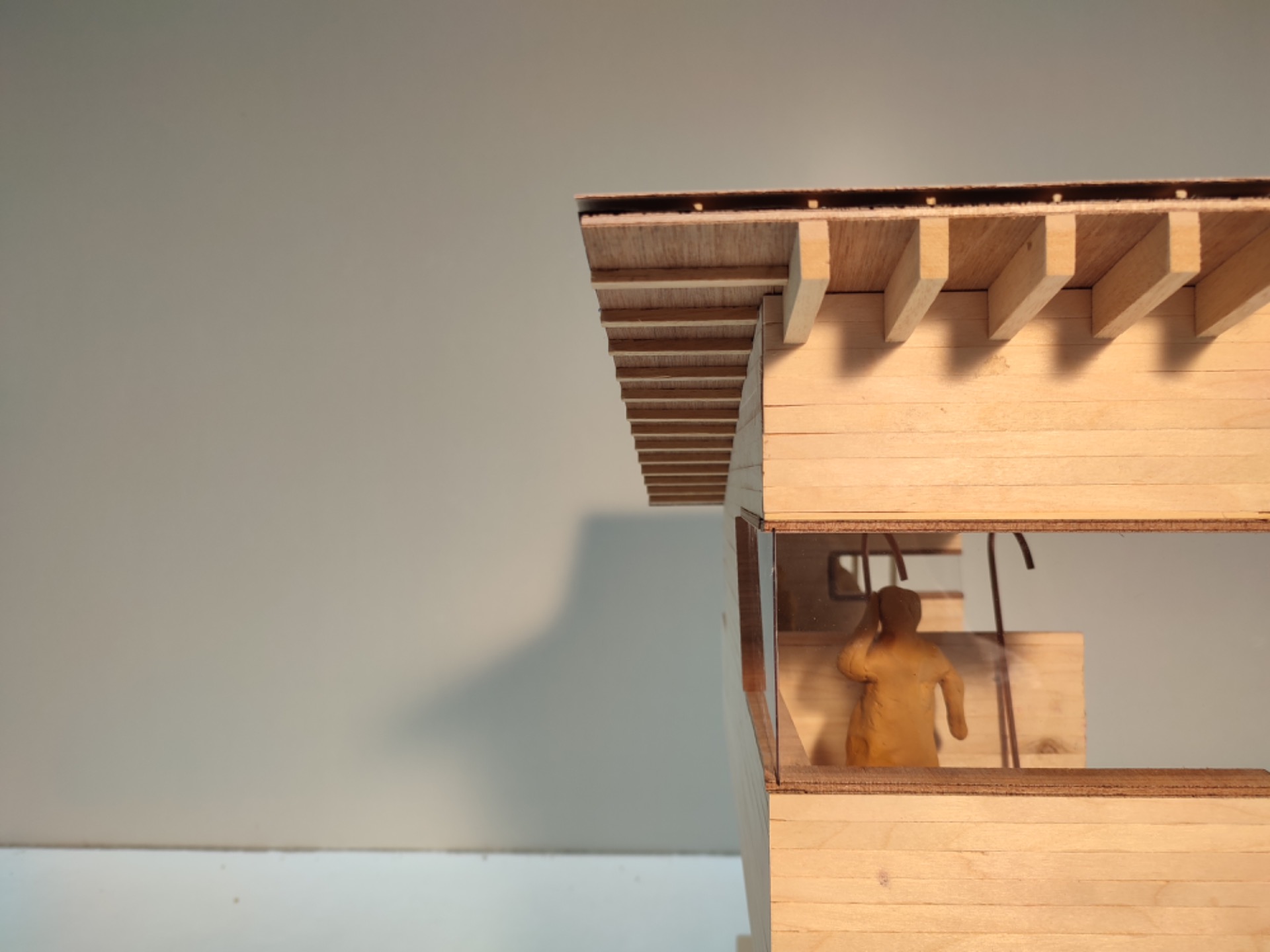
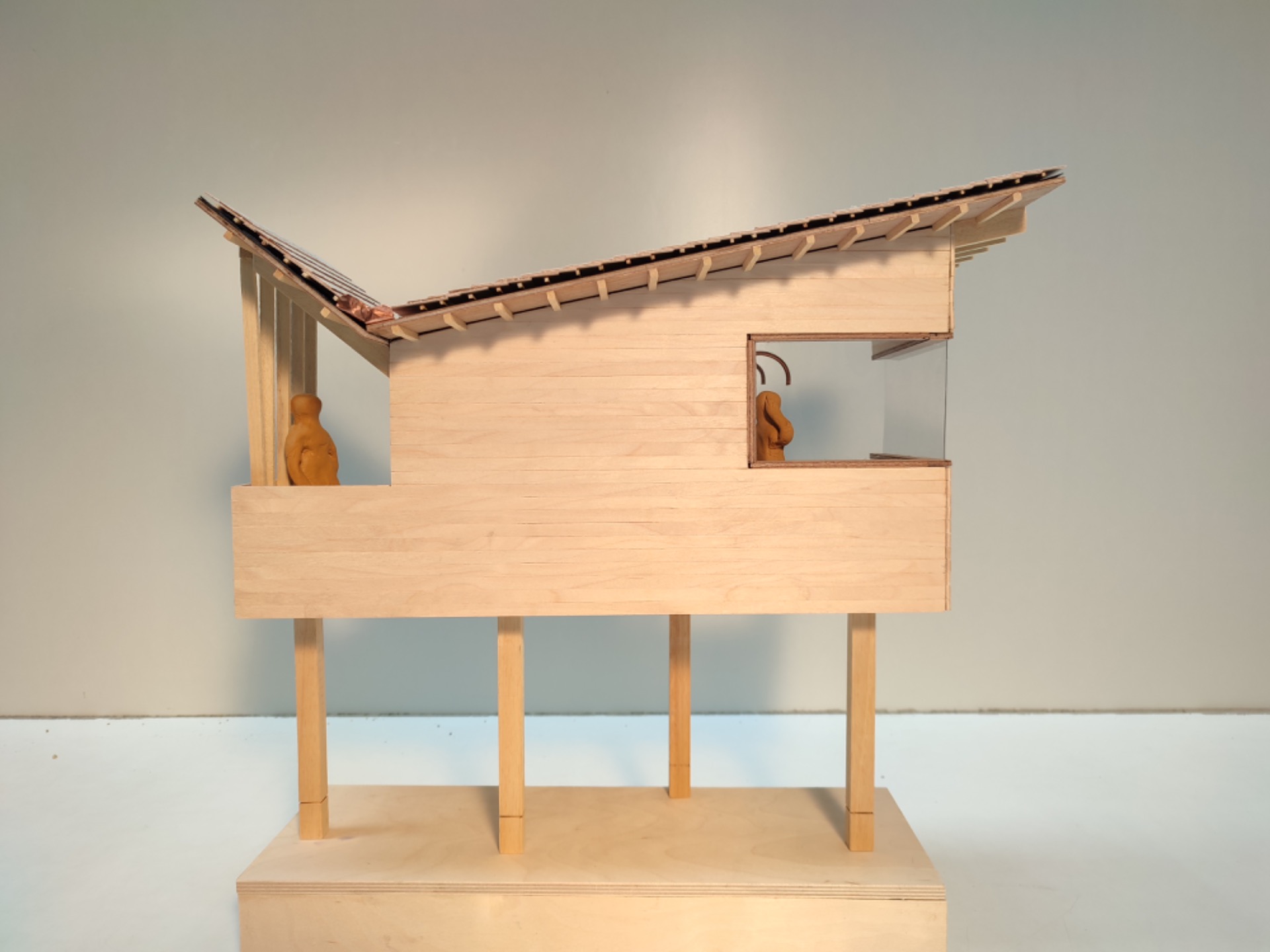
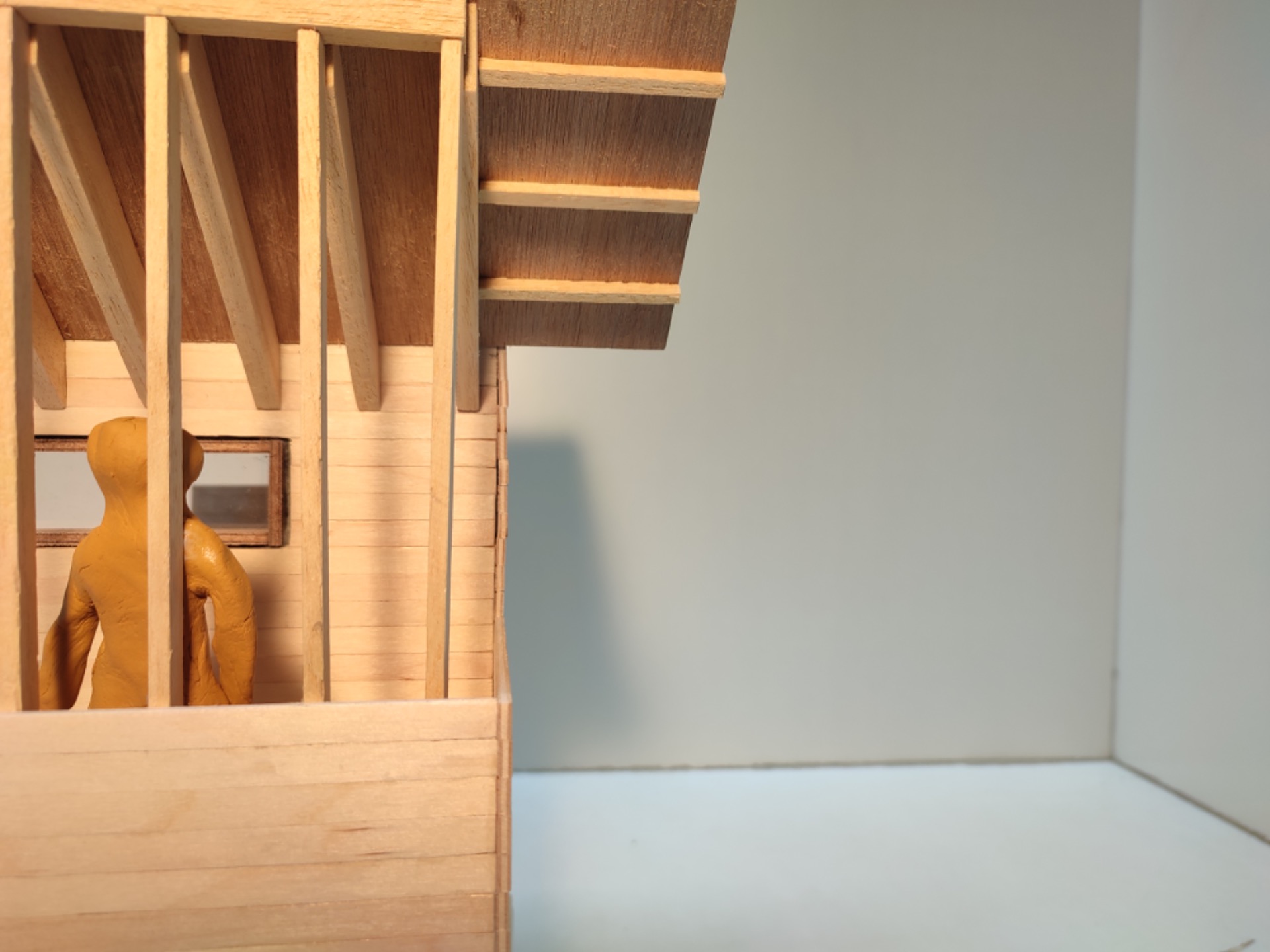
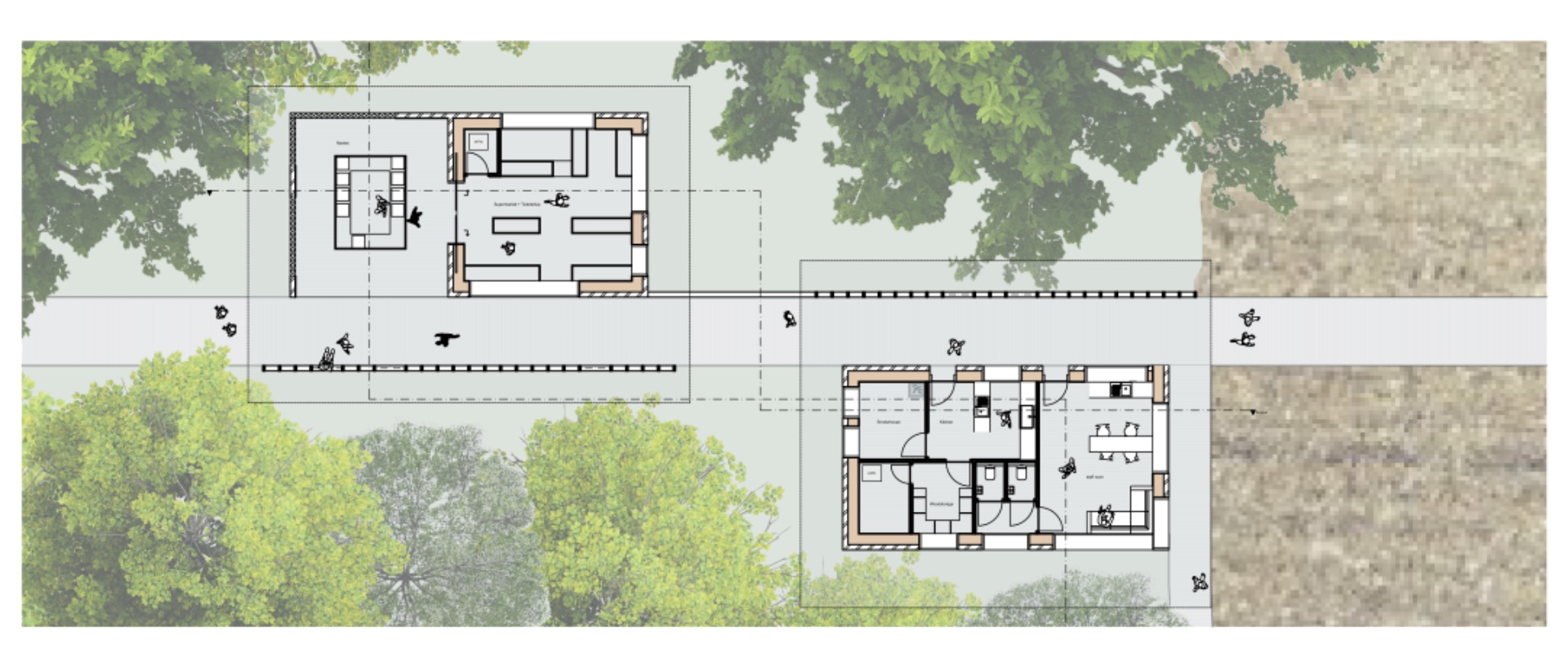
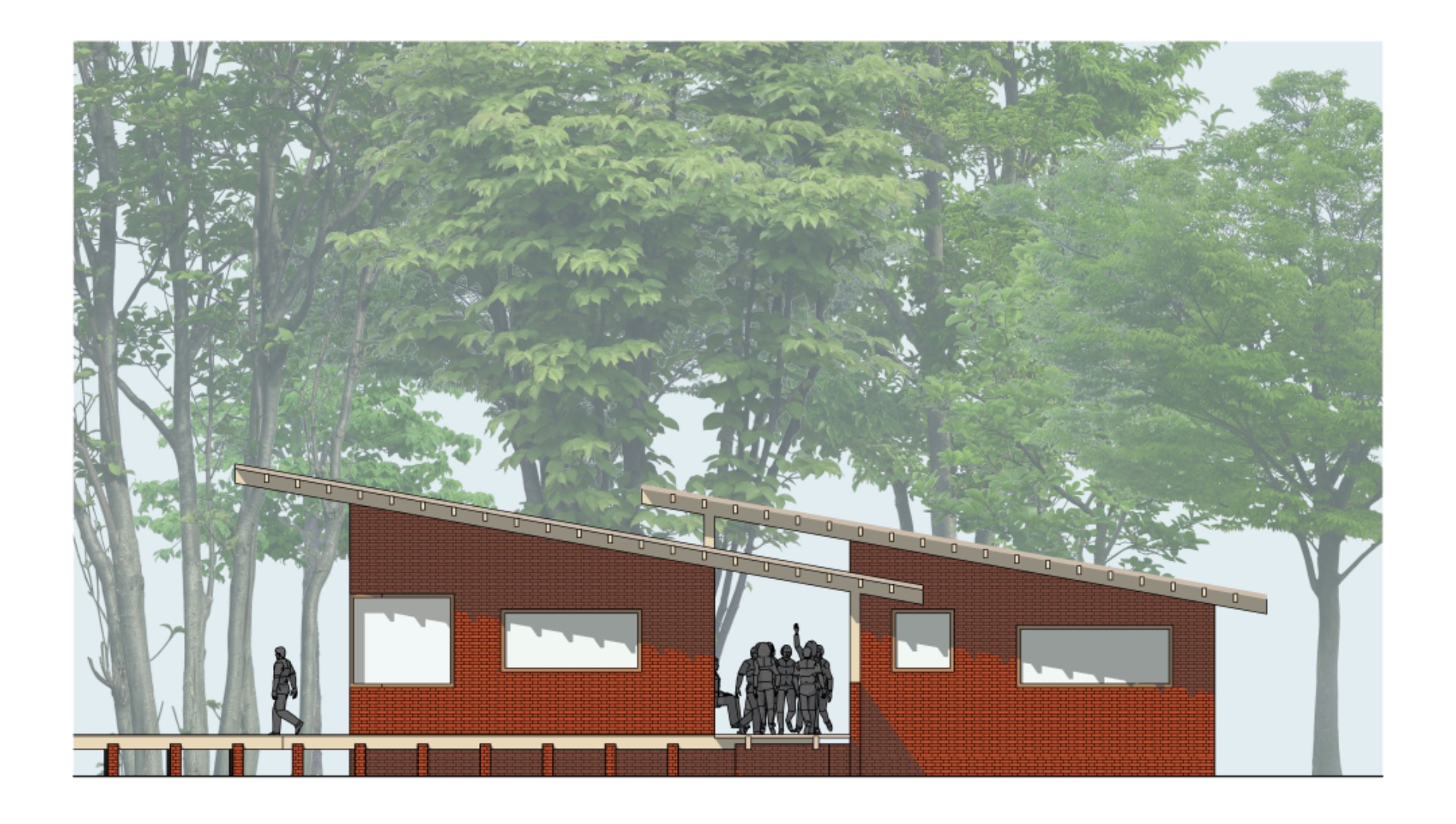
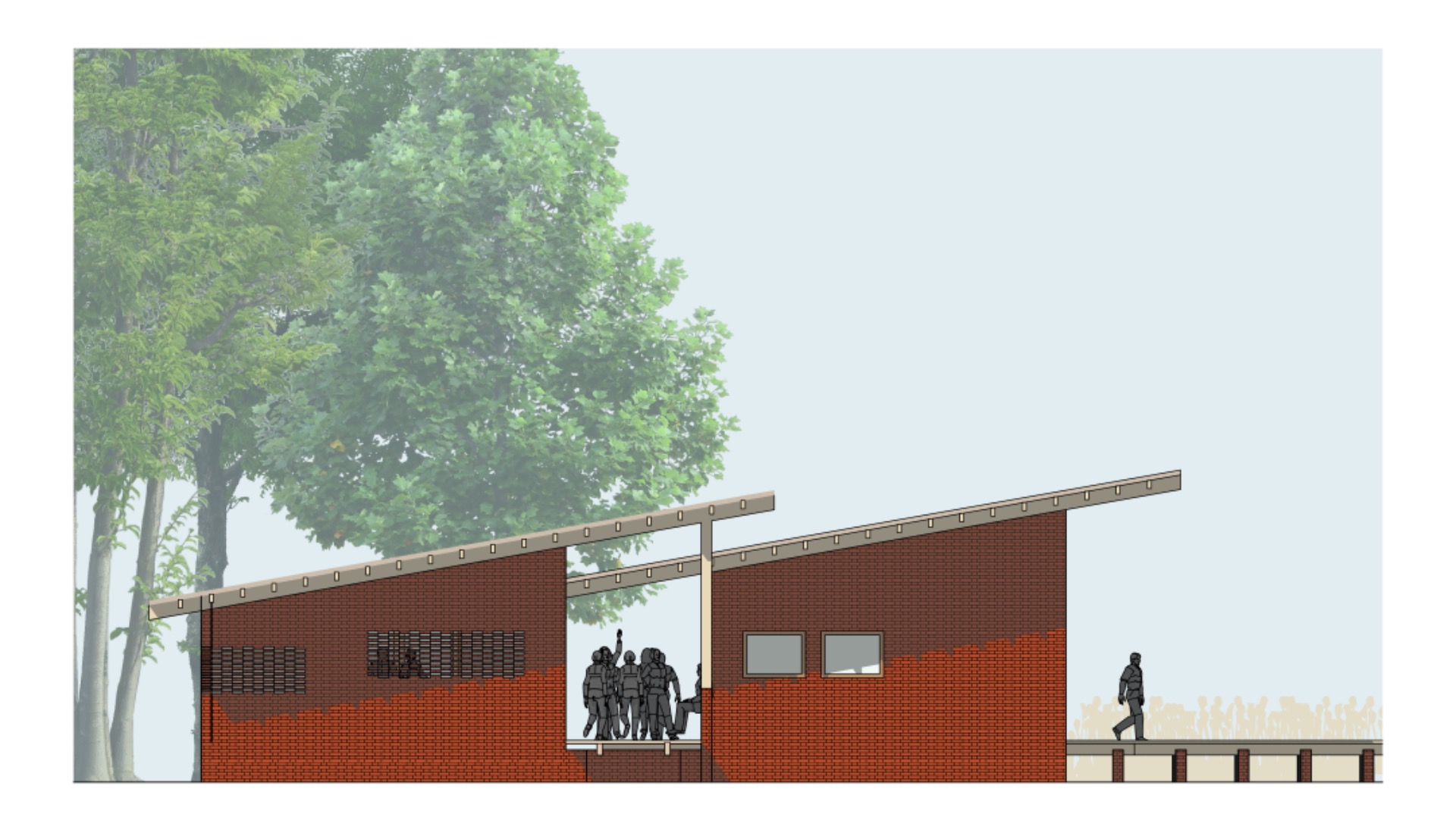
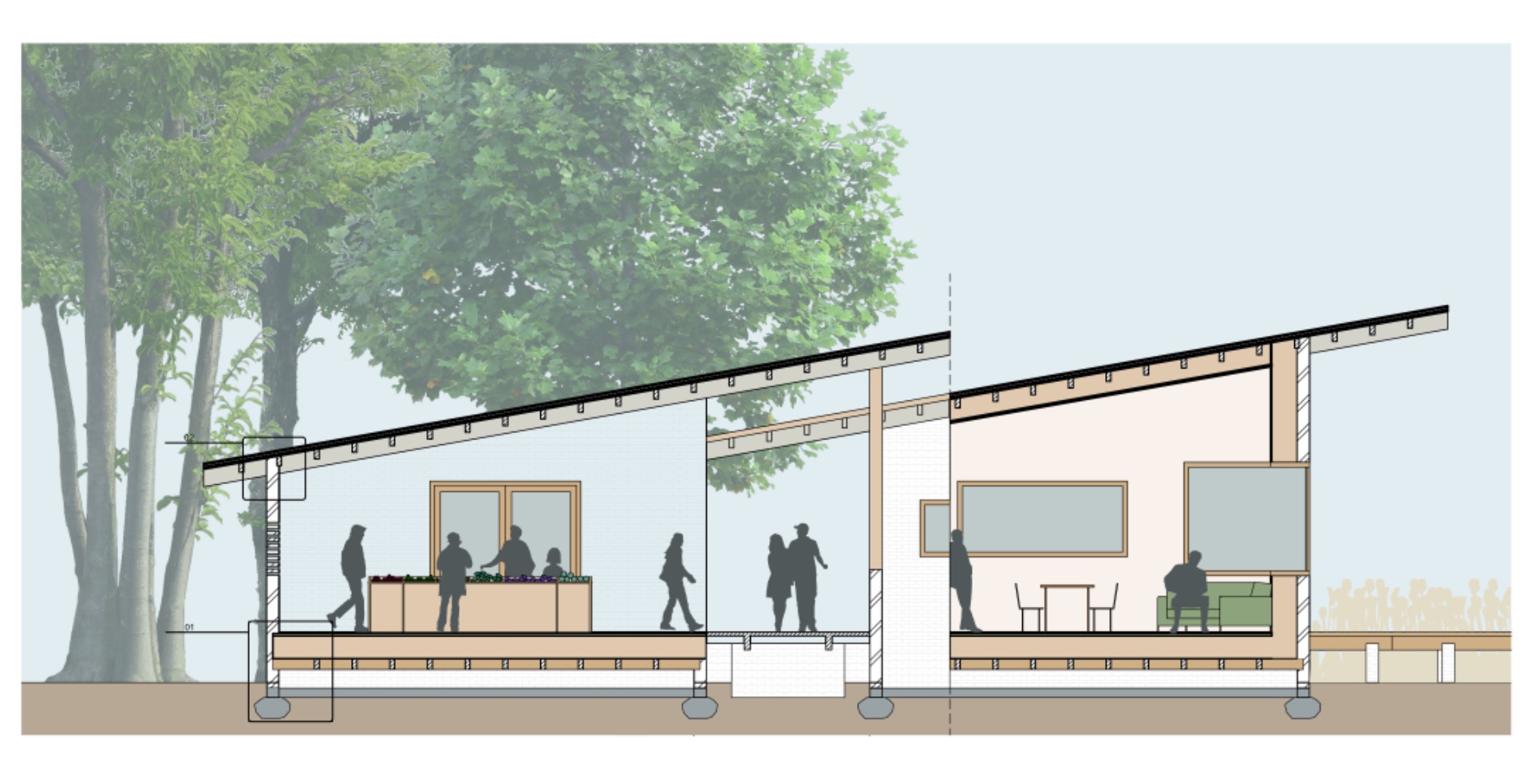
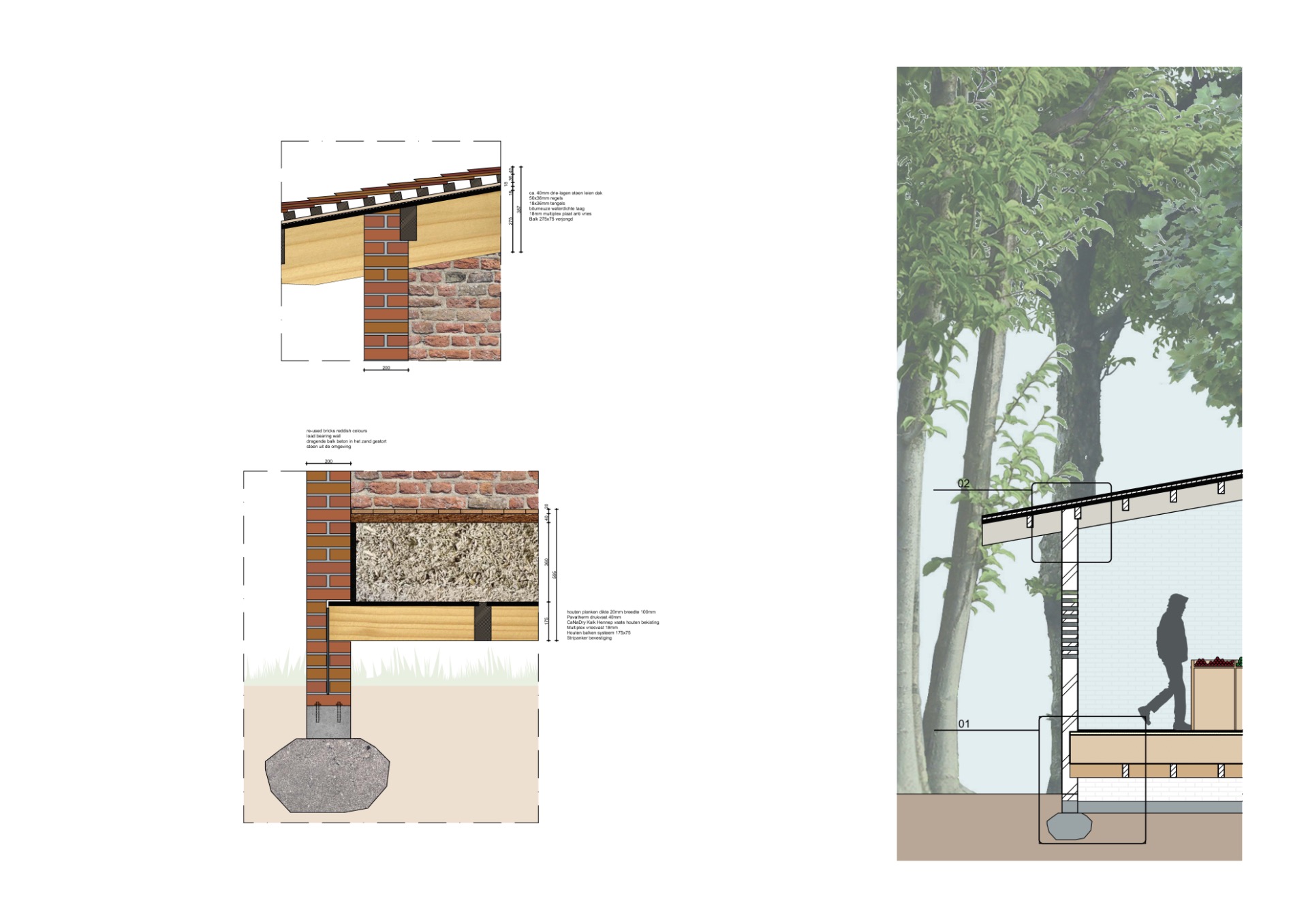
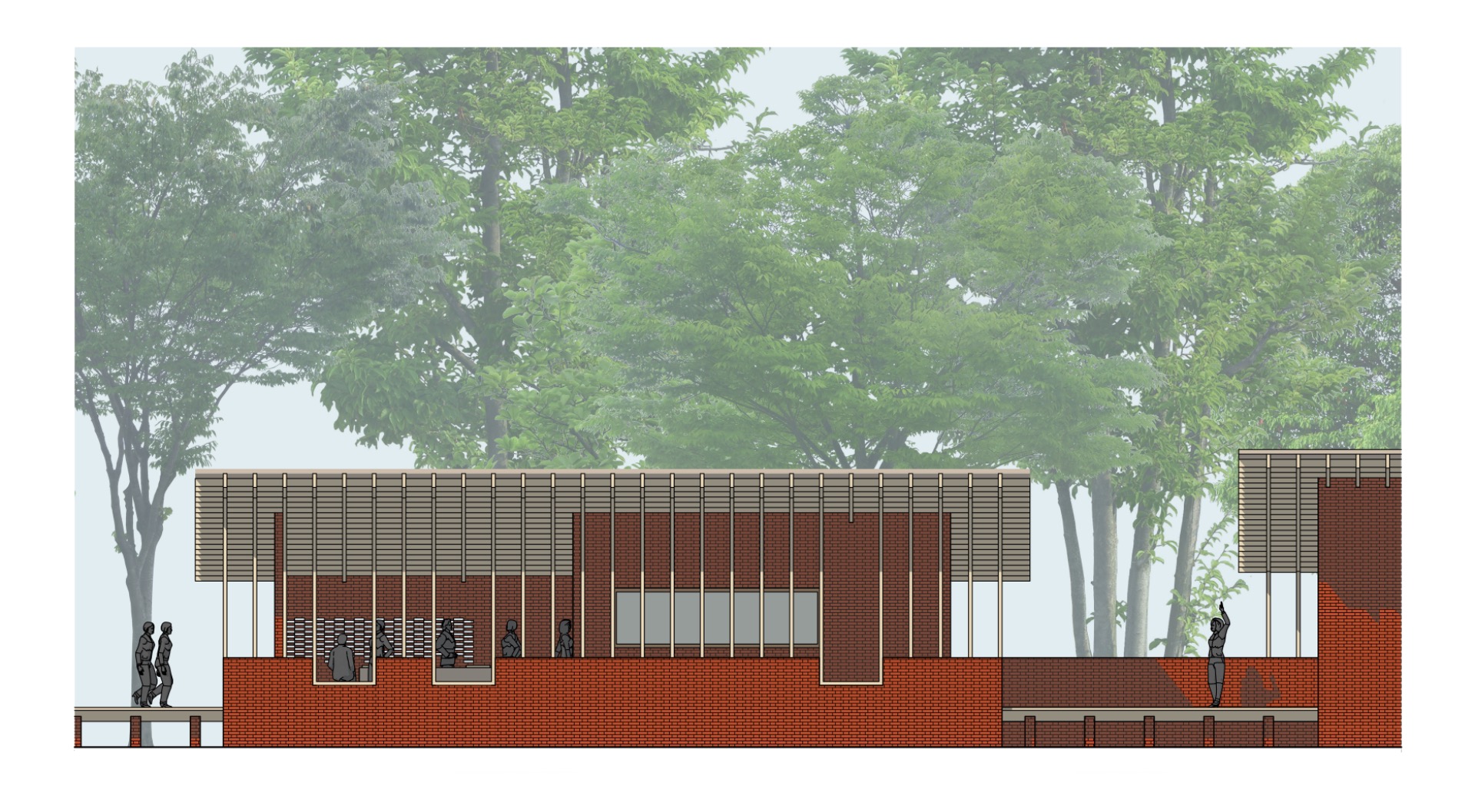


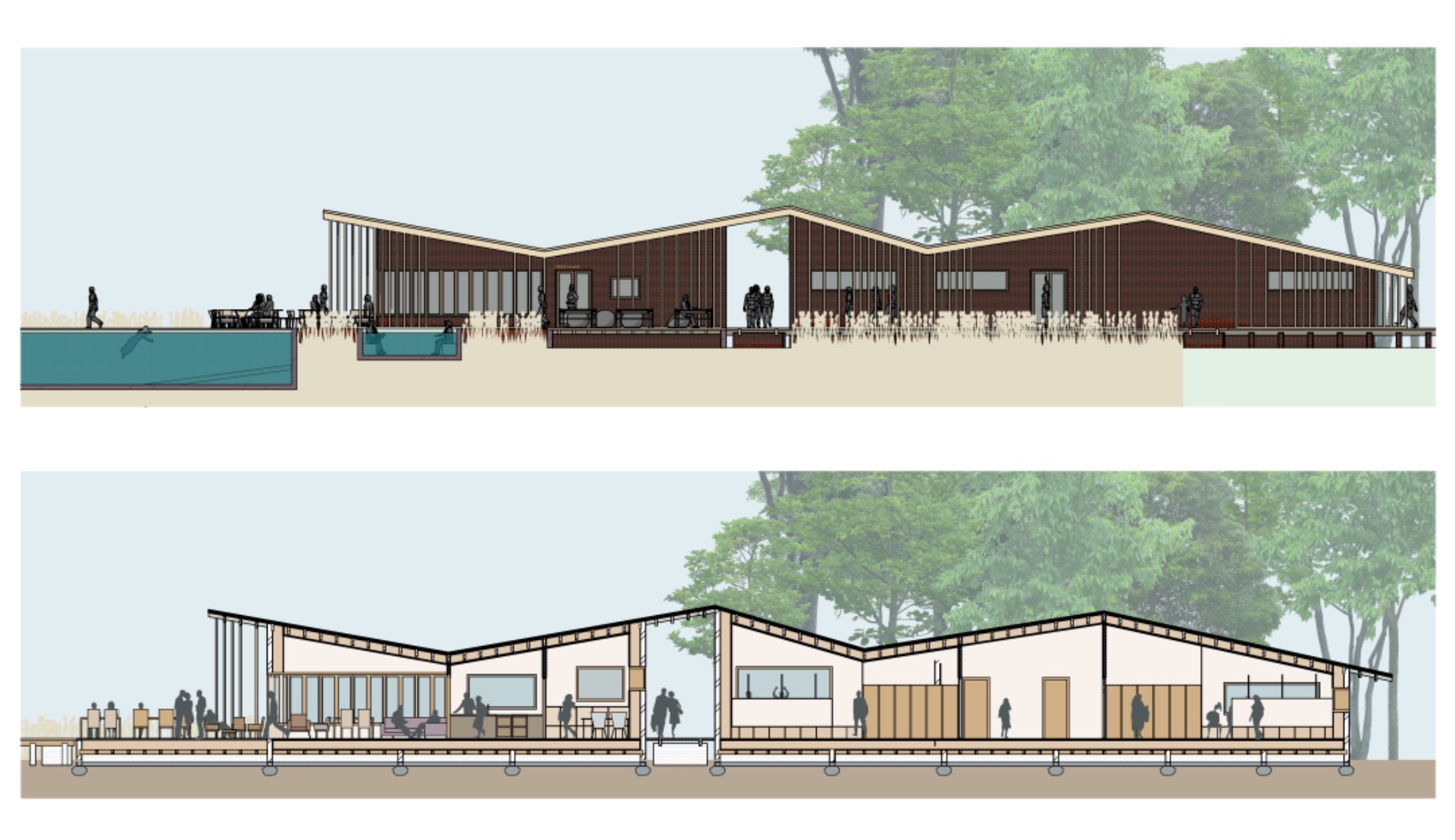
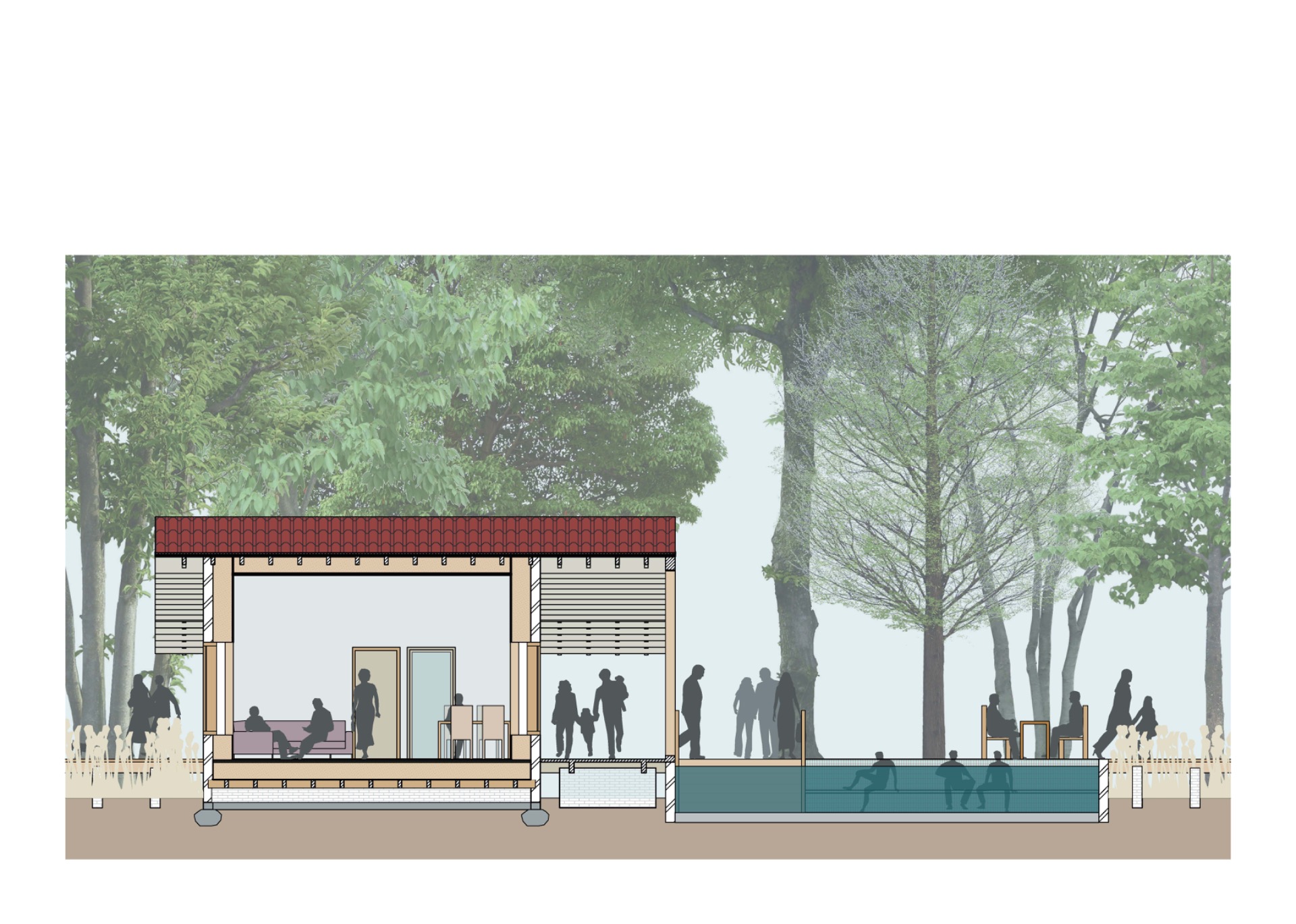
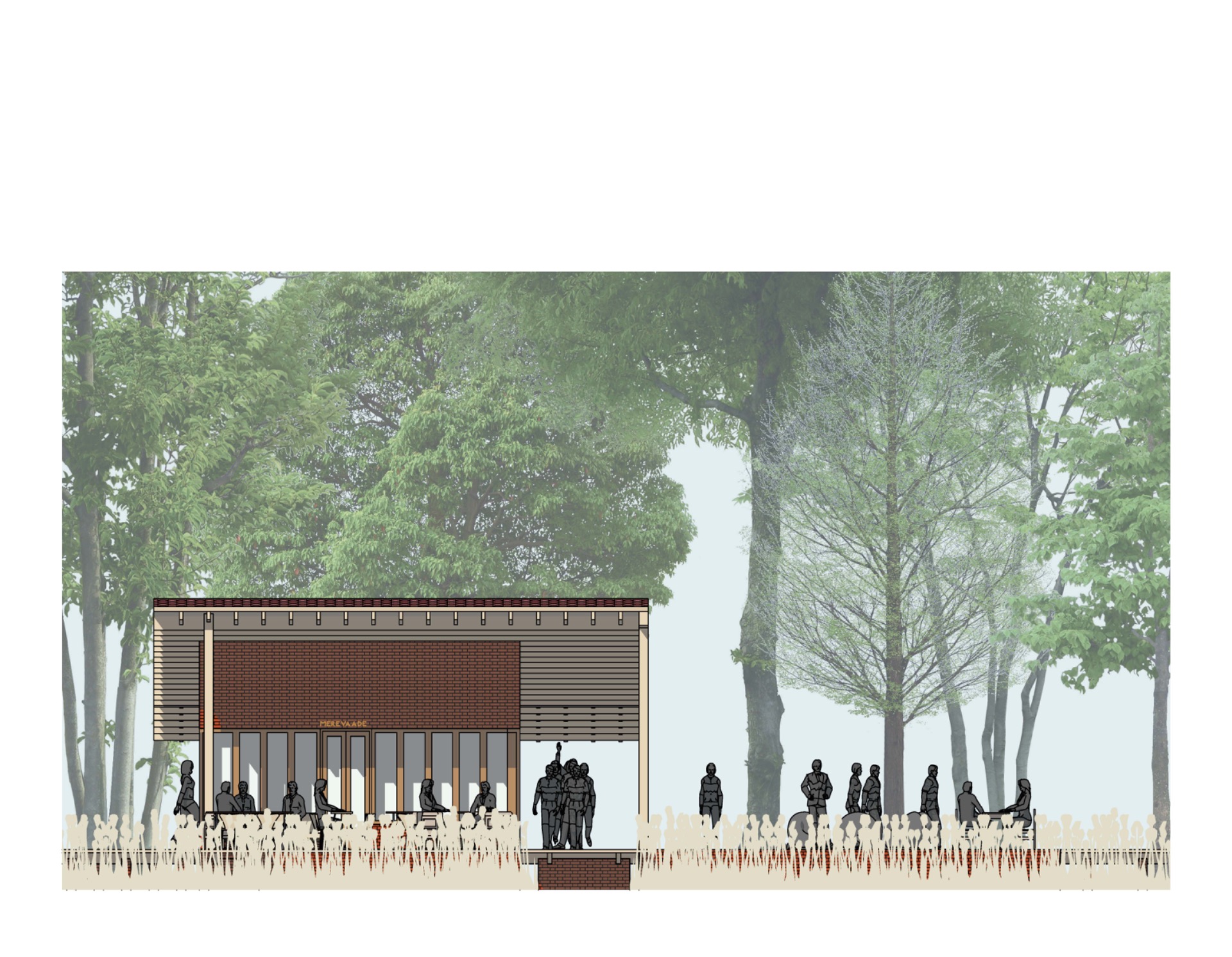
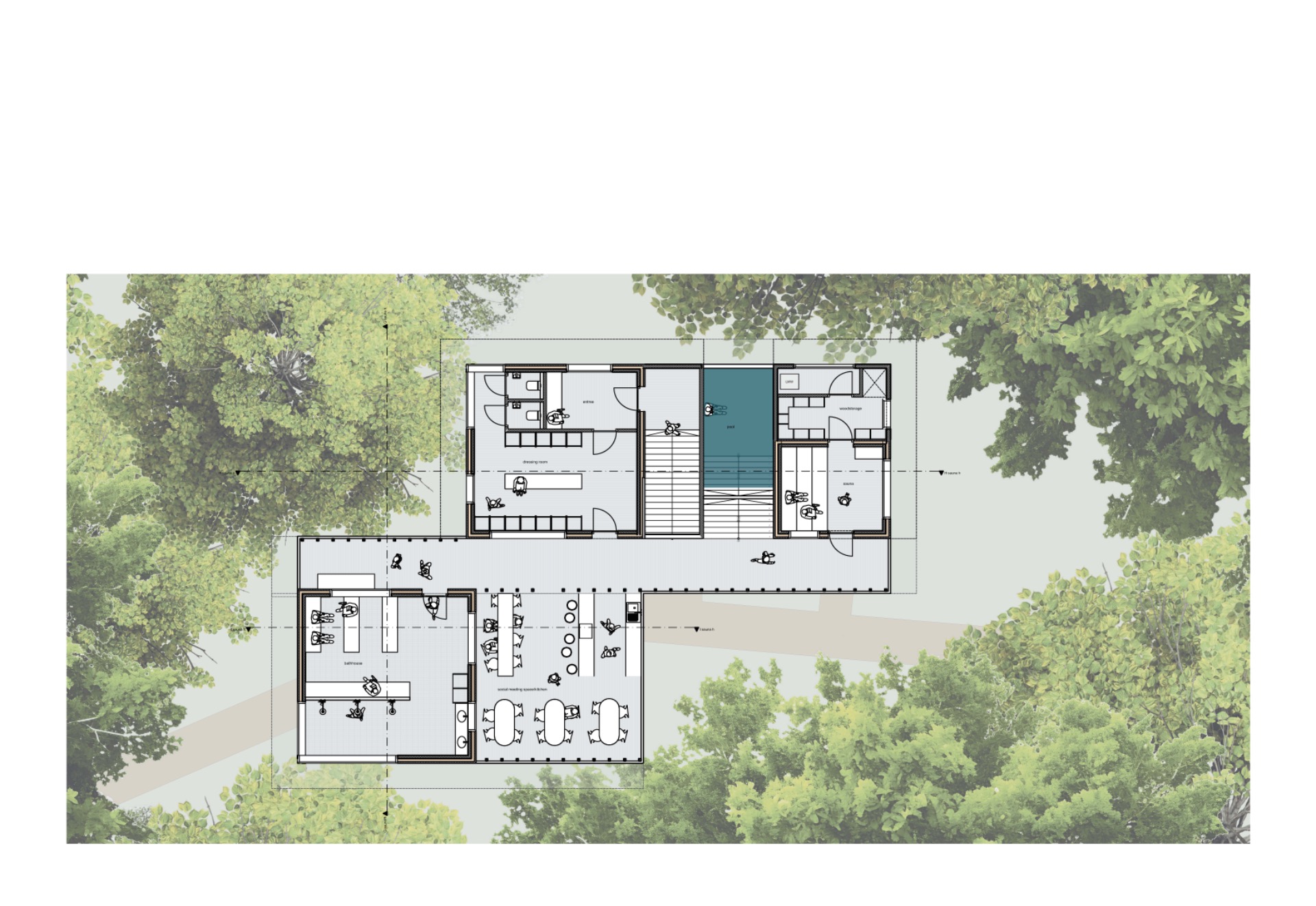
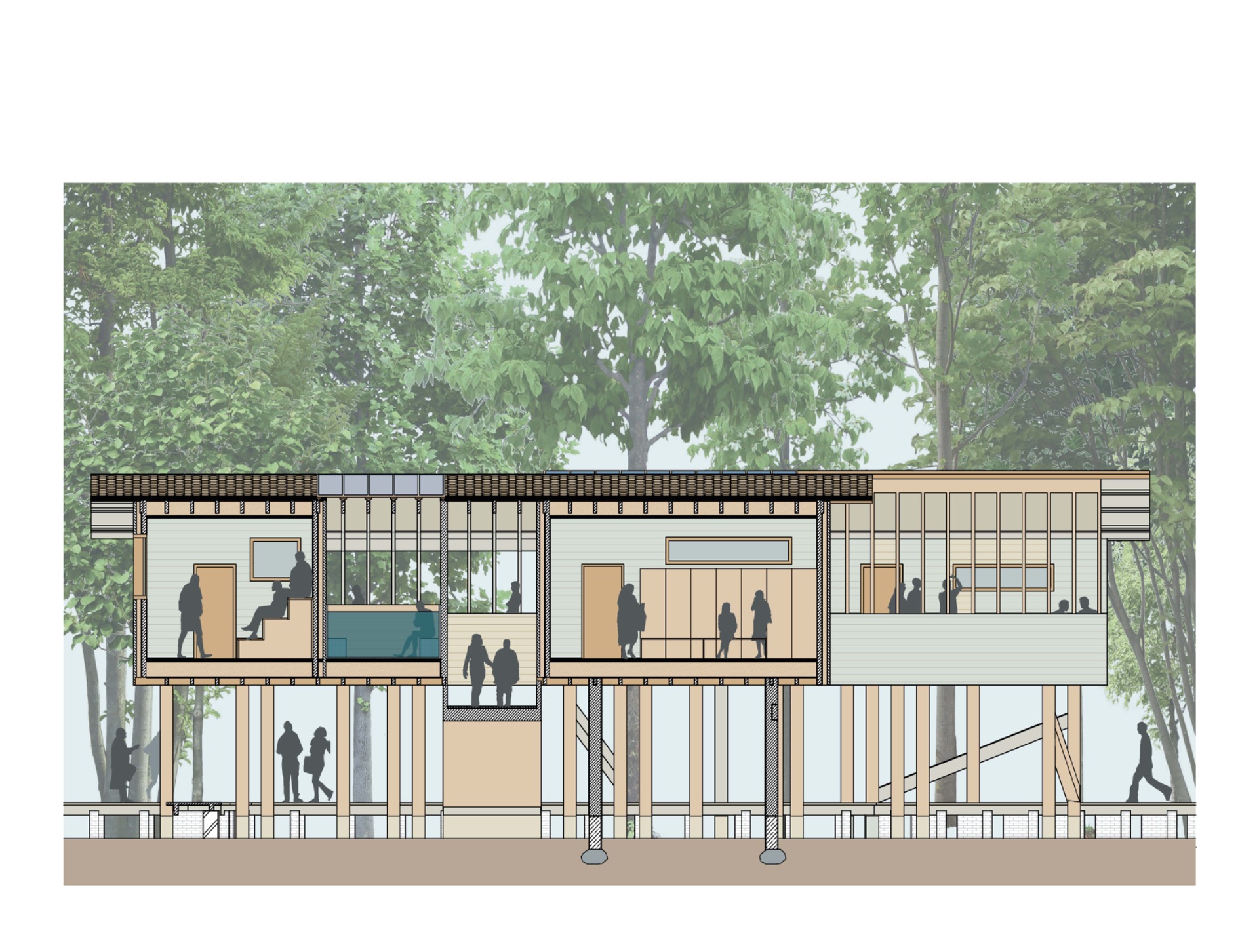
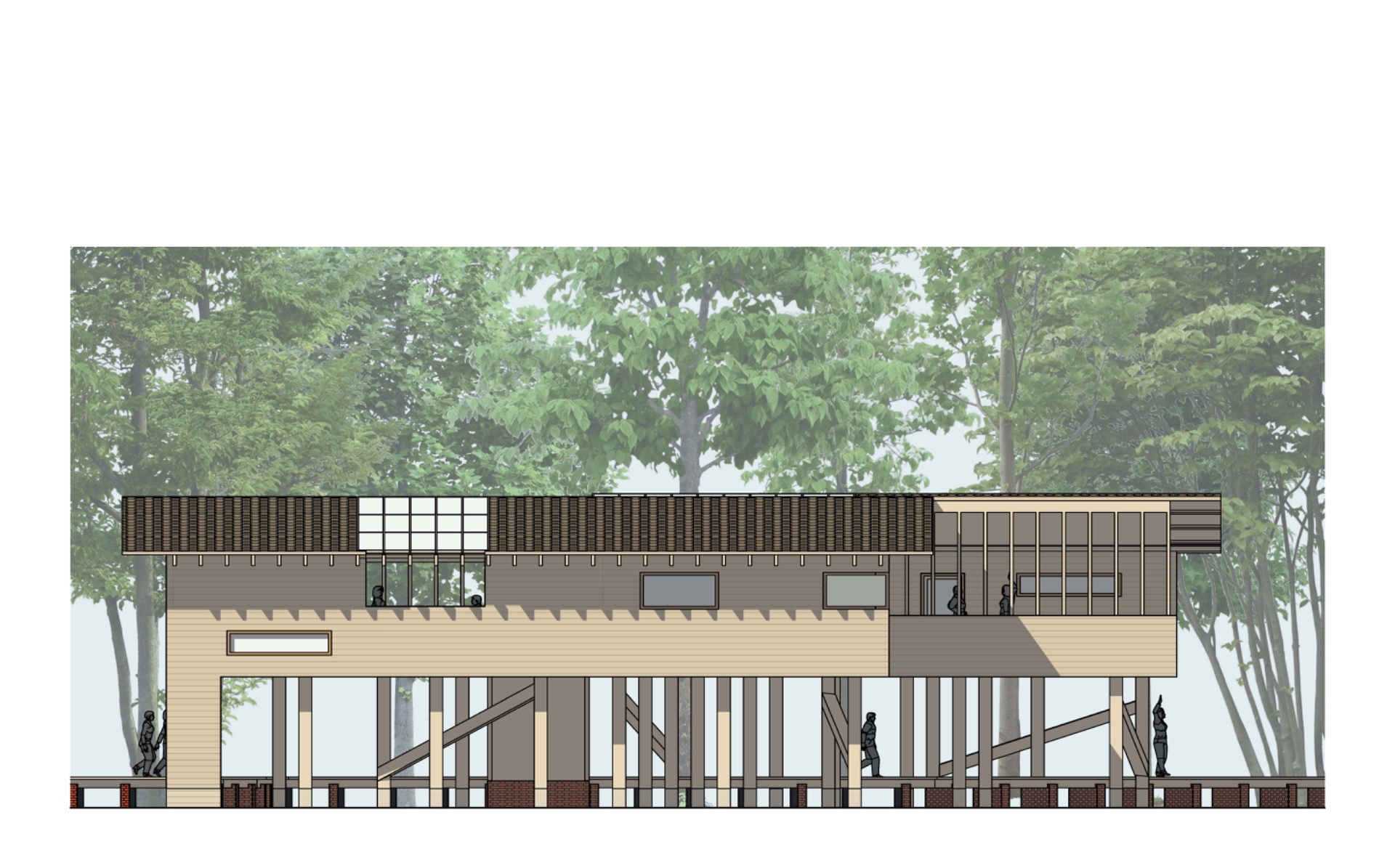
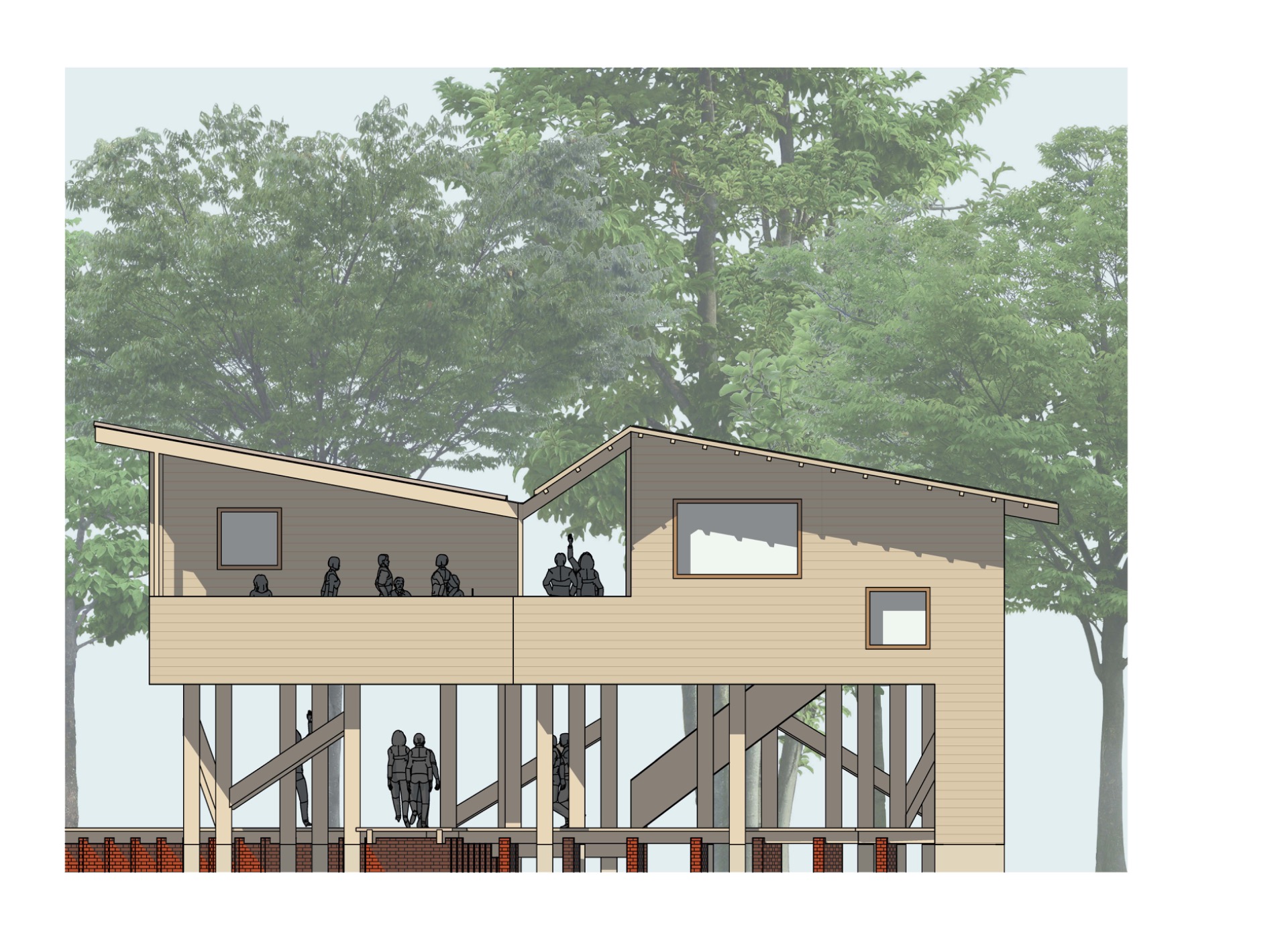
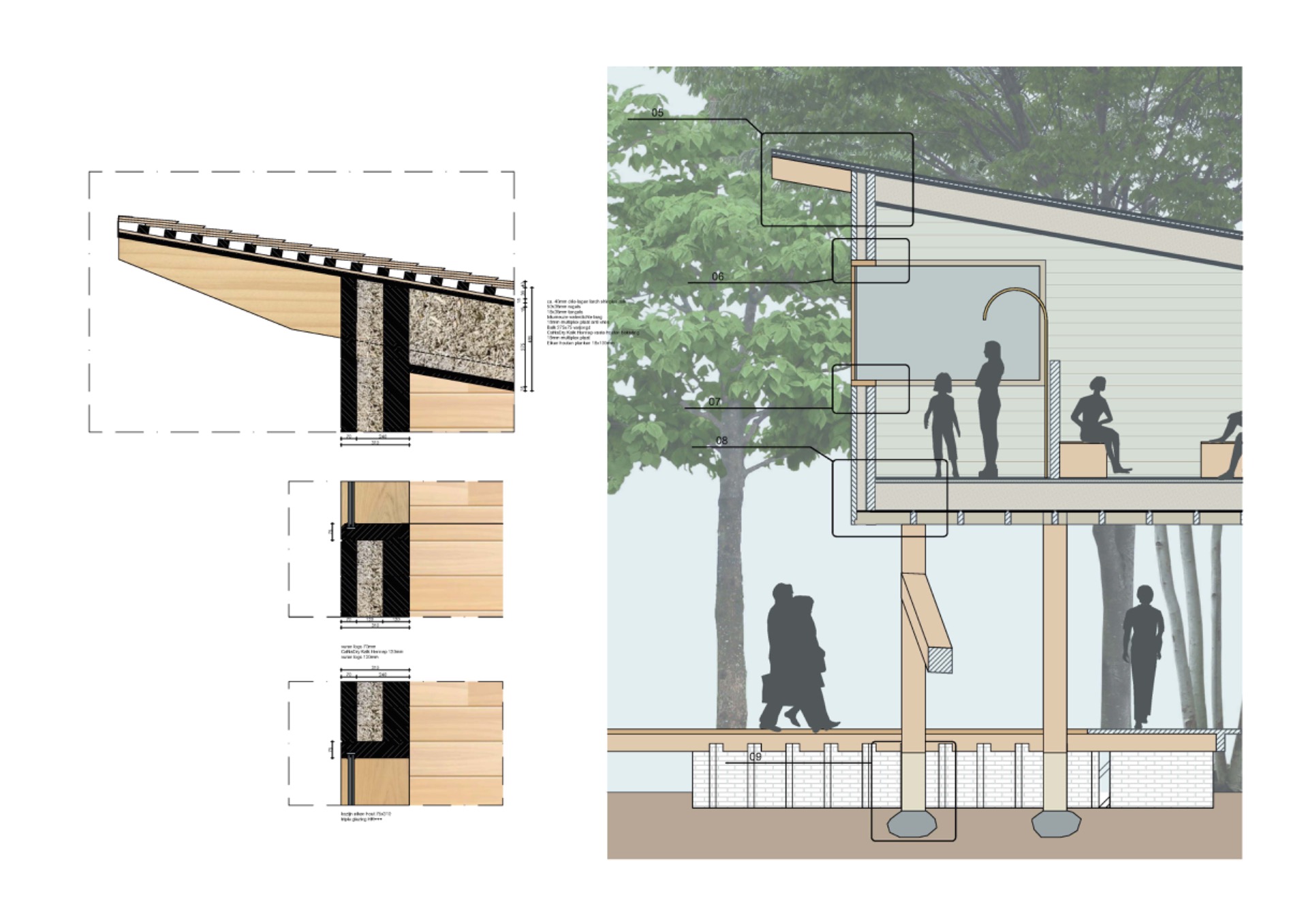
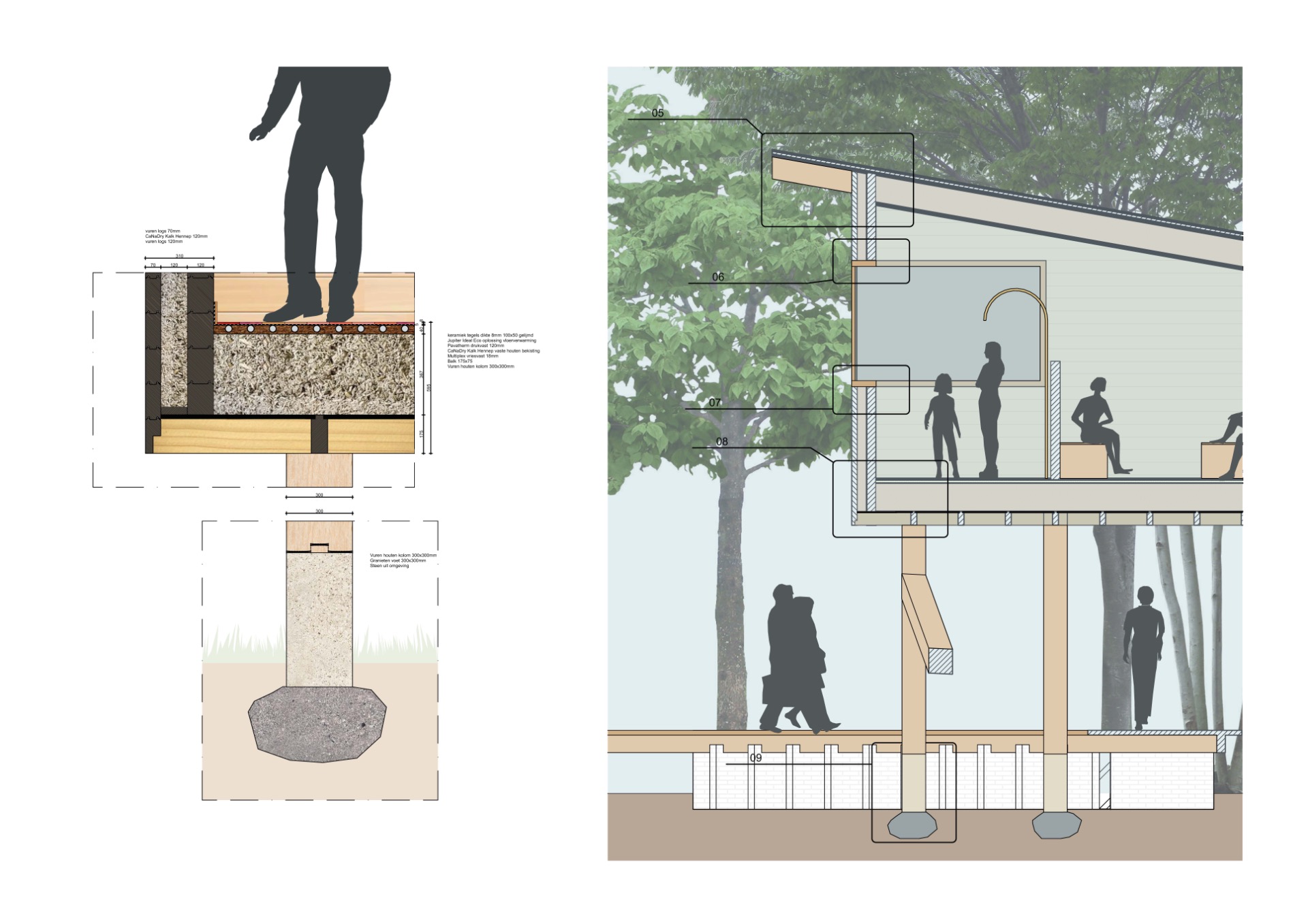
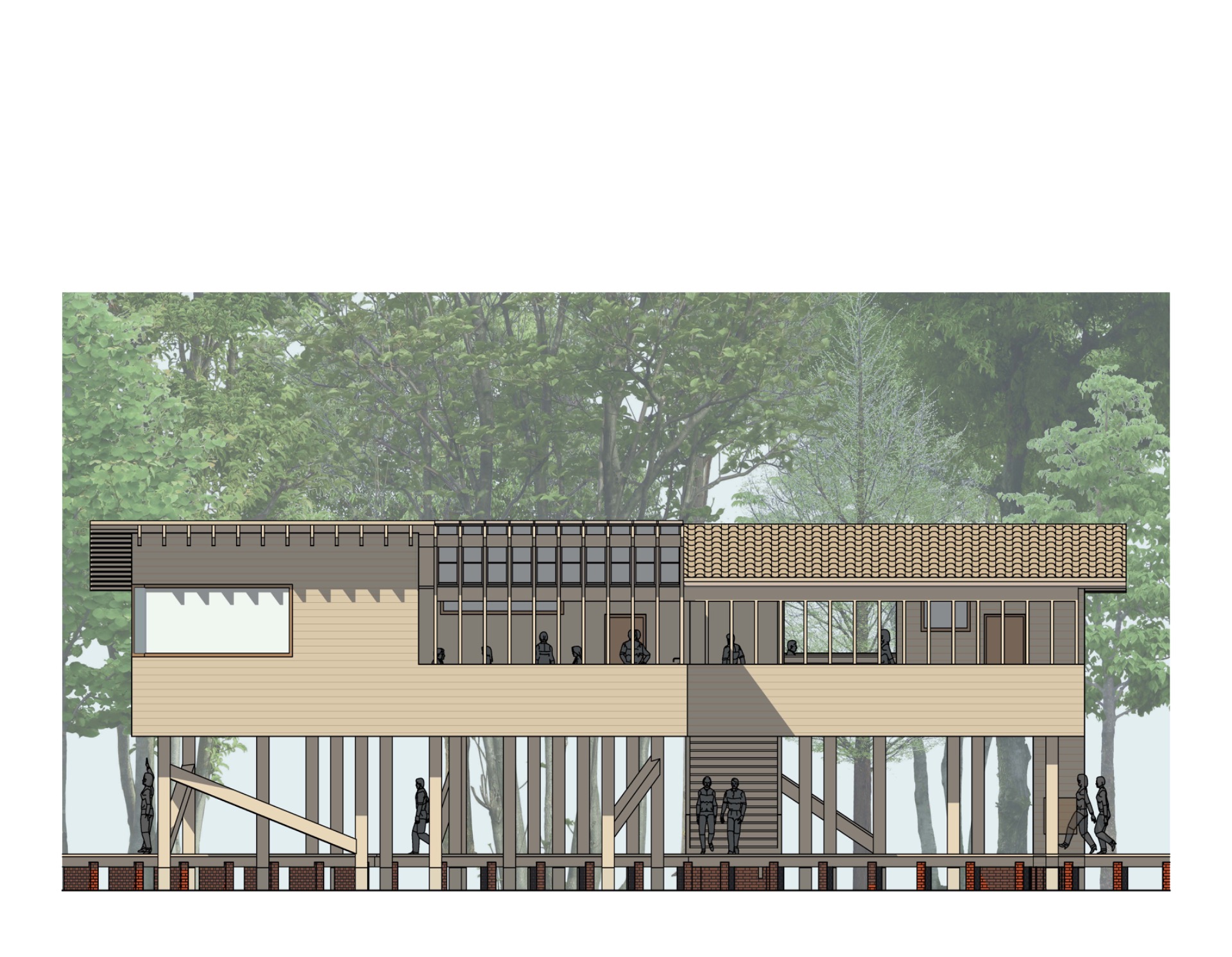
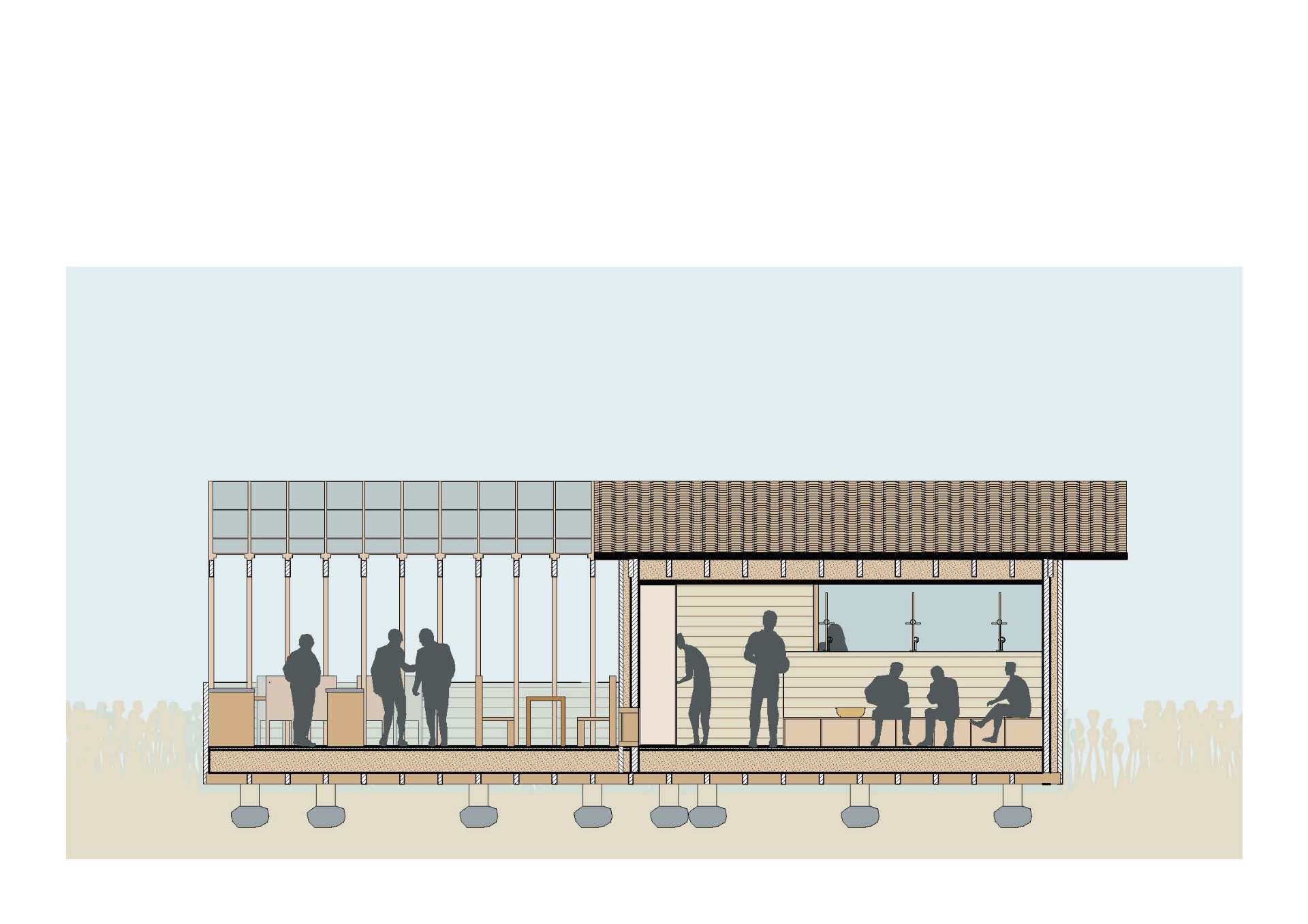
Graduation Studio - A Matter of Scale
The Social Symbiose
Opdracht
We had to form the assignment ourself. It had to be in Tallinn, Estonia, which we visited. A city whose scale is lost.
Uitvoering
Once in Tallinn I stumbled upon saunas. The sauna in Estonian culture is seen as a necessity of life, an instinct. It is the biggest social network in Estonia and the oldest. The sauna is a place where Estonian people meet, reconnect, and share on a physical and spiritual level. By being naked in this heat, one re-experiences its body, to reconnect the physical, mental, and spiritual relationship with one-self, others, and nature. The sauna is a social symbiose for the people of Estonia. Whereas trees play an important role in nature's symbiose.
I found an empty plot in the neighborhood Kopli. A neighborhood marked by the maritime shipyards which were used during Russian occupation. The area around Kopliranna contains many higher buildings where most people don't have a sauna. Kopli is one of the low-income neighborhoods in Tallinn. The people living in bigger apartment blocks (fewer space) with less money are visiting the sauna less than people with a private house or more expensive apartments. Before WOII there were many public saunas in Estonia, nowadays this has declined. In Tallinn there are around 6 public saunas, 12 big spas and somewhat saunas which you can rent privately. Only 2 public saunas still contain the traditional public sauna ritual of Estonia. These saunas are beautiful but also somewhat decayed and younger people might not feel welcome in this space.
Hence, the rituals and traditions in sauna is constantly changing, the uprise of sauna in a spa contravenes with the sauna ideologies. The sauna is being westernized (as in Netherlands is the case with saunas), and it is important to create a space where this original social symbiose can still find its place. After covid you see an increase in public saunas because of the growing need the for social contact with others, yourself and nature.
Whereas gentrification is on the rise in the Kopli area it is important to create spaces where local people can meet, socialize, relax and thrive in their neighborhood. To have a space where they feel connected with themselves, the sea, nature, and their surroundings. The chosen location near the sea has the possibility of connecting people and water. People need each other and nature to thrive. The chosen location is an area that has been desolated for more than 100 years. It seems there has never been built before, but there are small remains of an old fishermen's village from the 14th century. After this the small paddock has been empty. Empty without buildings, but the paddock has young and old trees from different species, supporting different habitat.
The assignment contains three different parts. A man-made elephant trail leads us into the plot where the gate building awaits. An entrance building where people enter the area and which frames the first view of the sea. This entrance contains a smoke house for fish, meat, and vegetables, a small market where one can buy these smoked goods, a ticket shop, and a small lookout.
A visitor can either continue the main path leading to sea where a second building is settled. This building facilitates a café, dressing rooms and a heated swimming pool accessible for everyone. Besides this a pier over the water grants easy access to the sea. This building is the connection amongst the people and the water, the sea and the land.
If the visitor takes the secondary road leading to a more secluded and intimate area one stumbles upon two somewhat similar buildings. The saunas for women, men, and families. The pavilions relate to nature and have all the facilities Estonians need to social interact in the sauna. The pavilions function on their own, but one can take a stroll and go for the heated swimming pool or enjoy a dip in the clear blue sea. These two saunas are a completely different experience. One is up in the trees, while the other is in the reets.
The four buildings melt into the landscape of trees, reed and sea moving around the natural habitat. The landscape design was made with recognition of what was before, and what enlifts the qualities of the plot.
The site-specific design of these four buildings allows the people of Tallinn to reconnect with themselves, each other, and nature in a mental, physical and spiritual way. The saunas and its buildings function as a place of sensorial reconnection, through materials, nature, and social facilities.
For the full project look at the repository from the TU Delft.
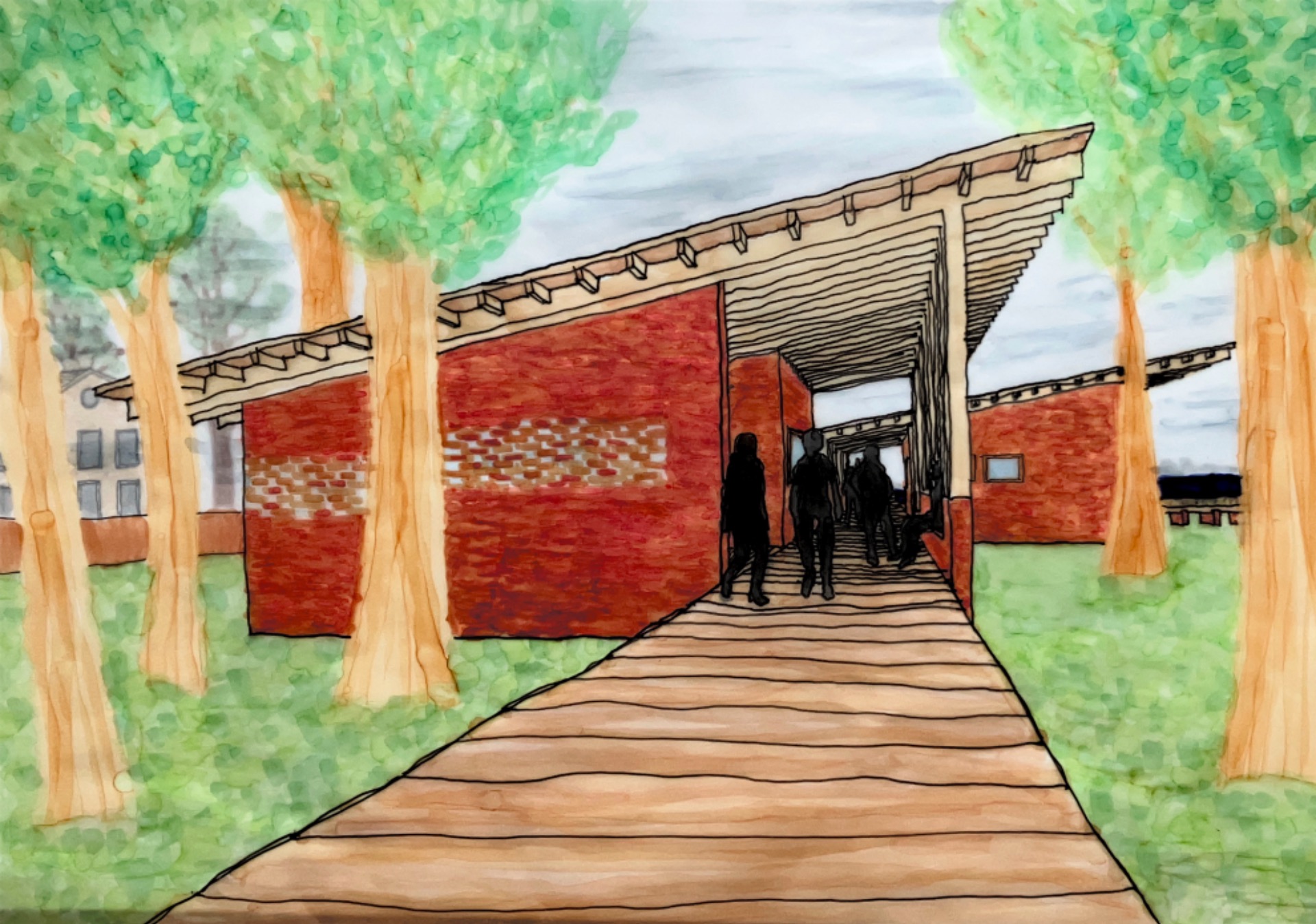
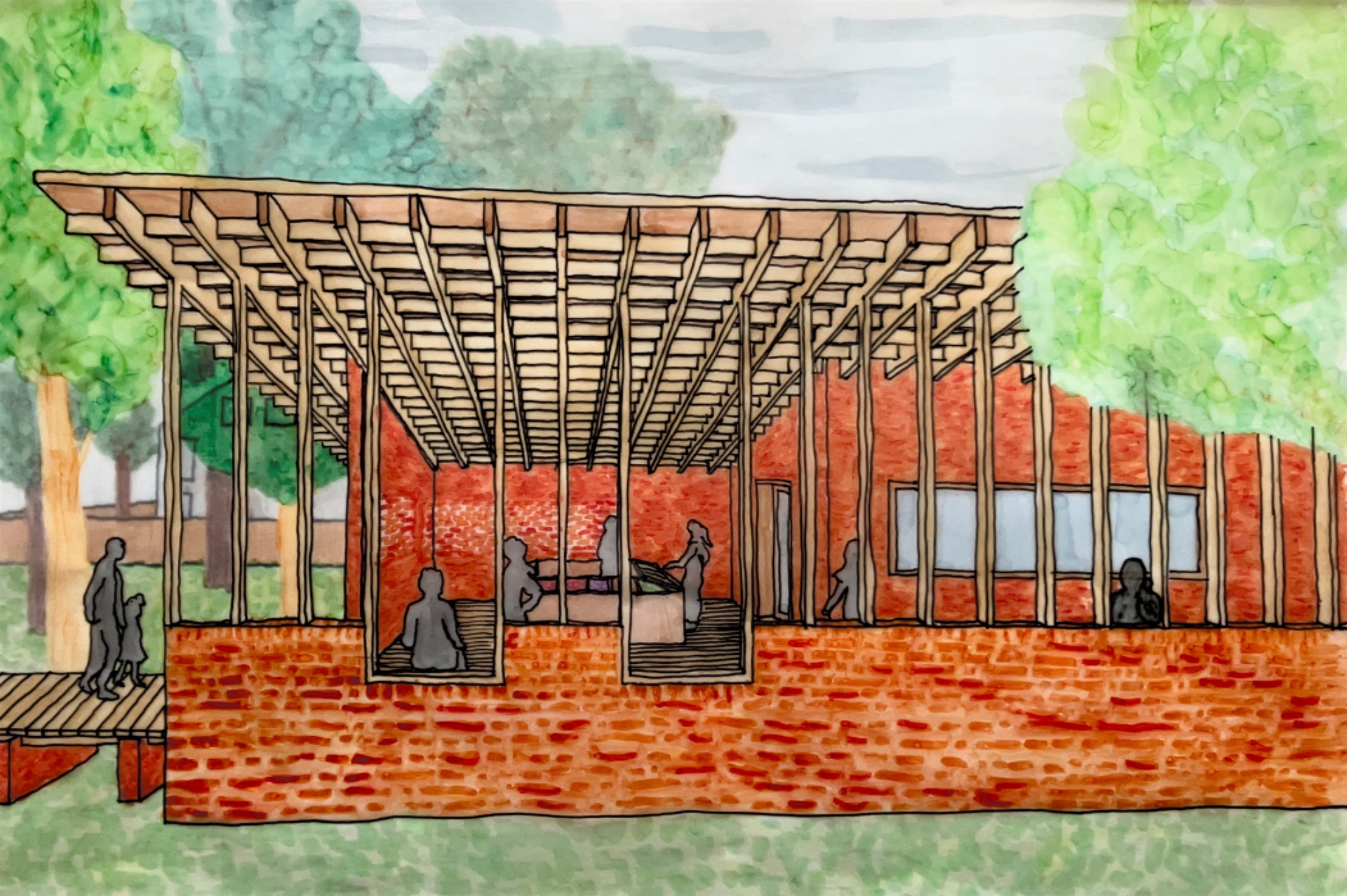
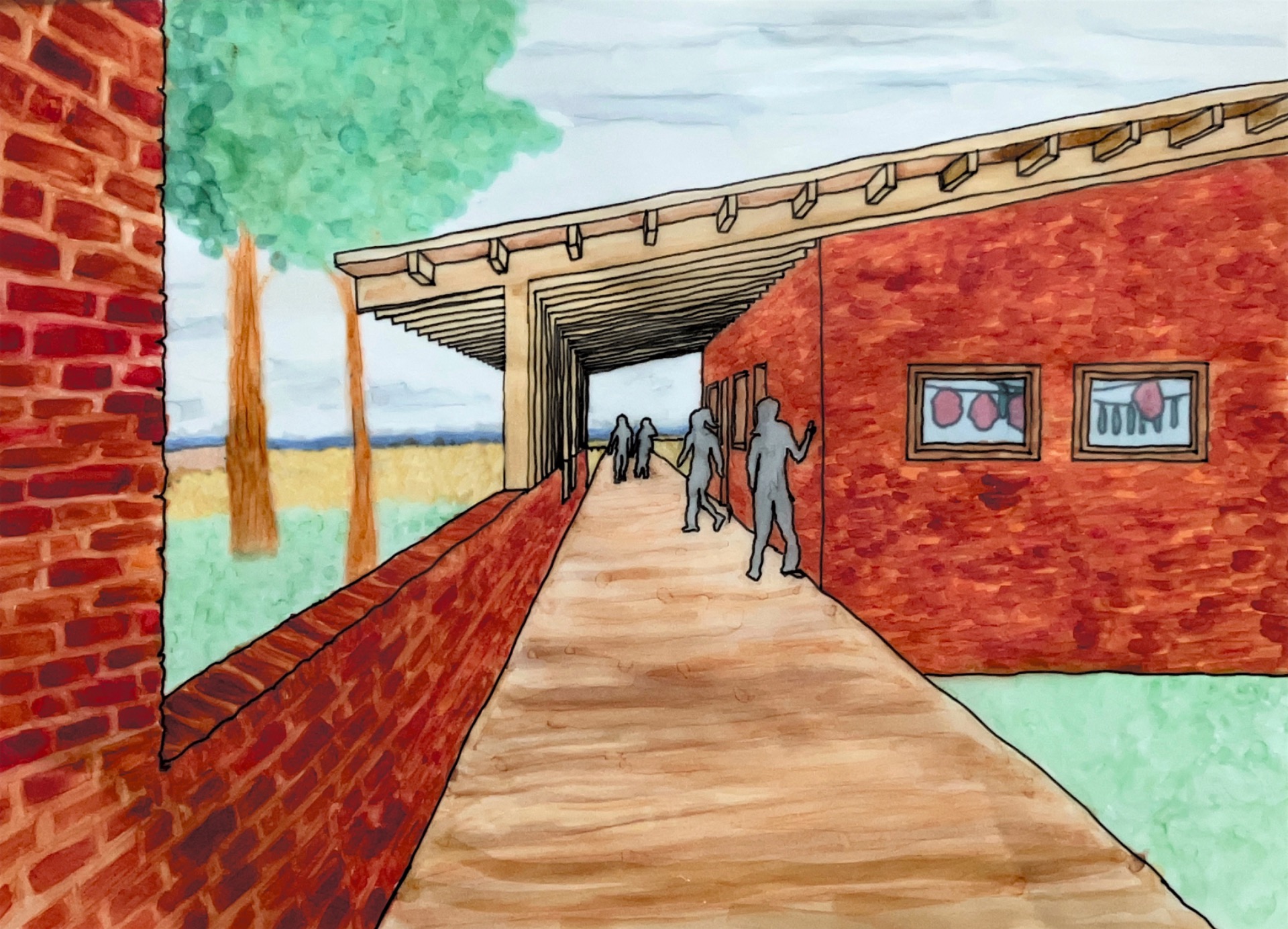
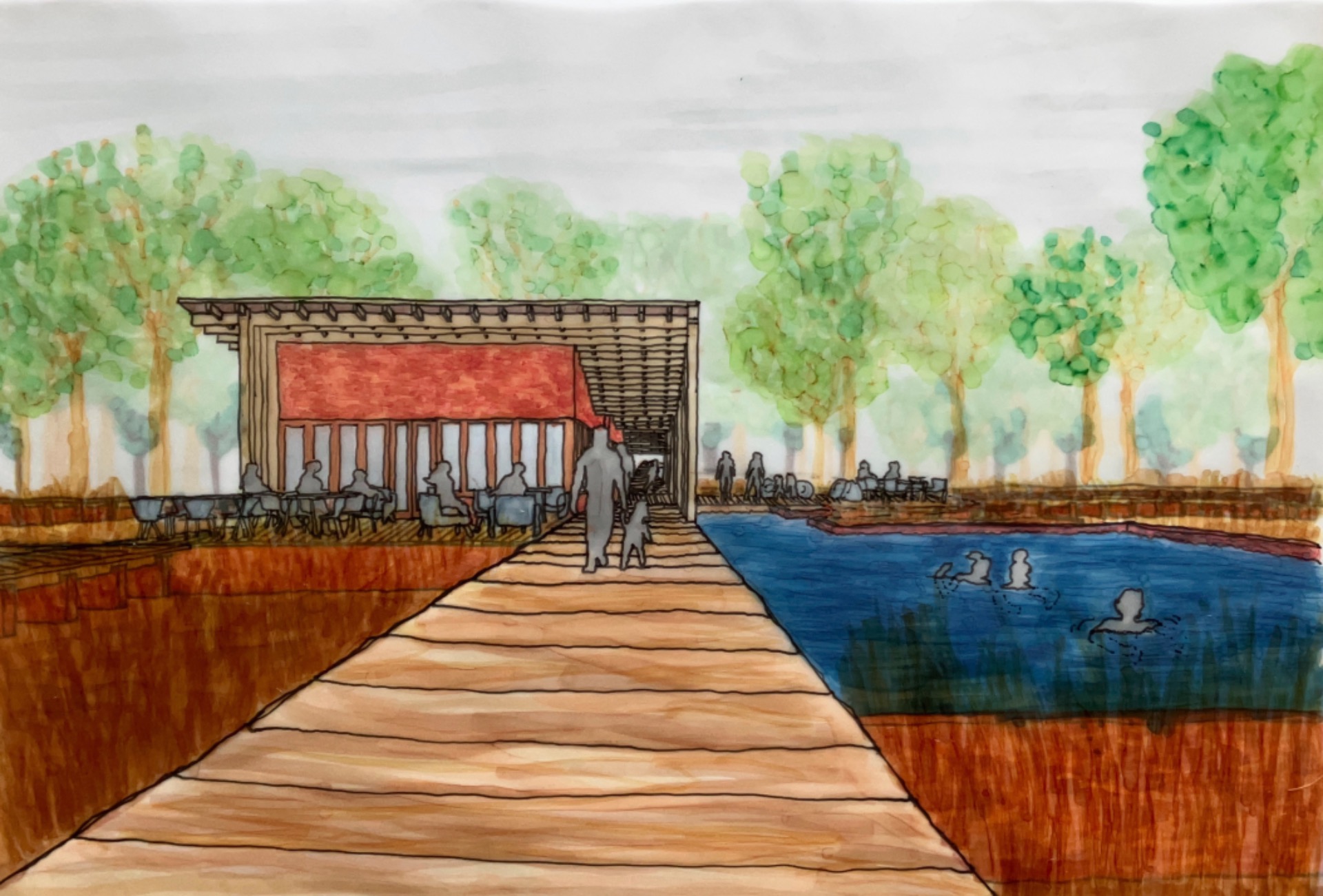
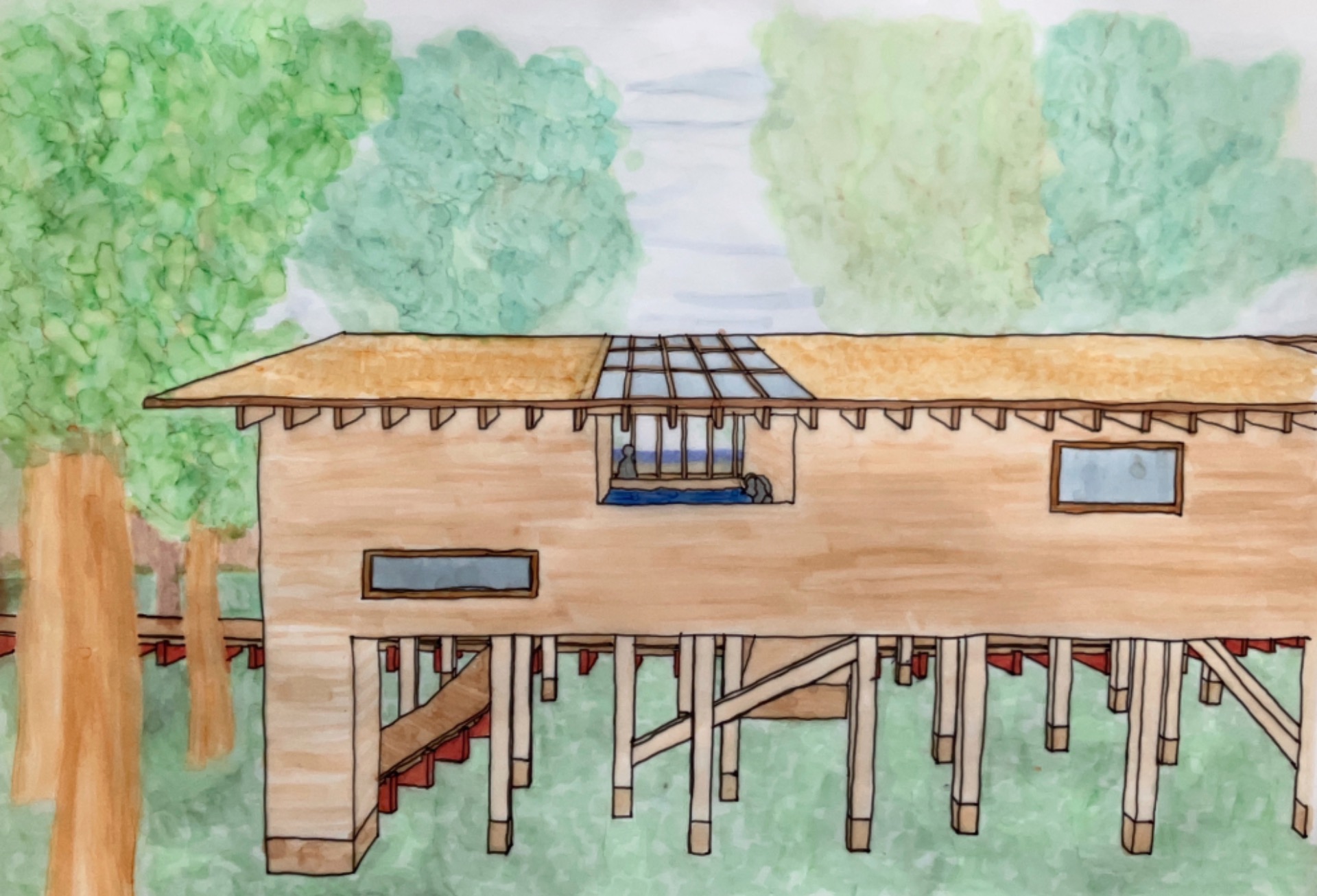
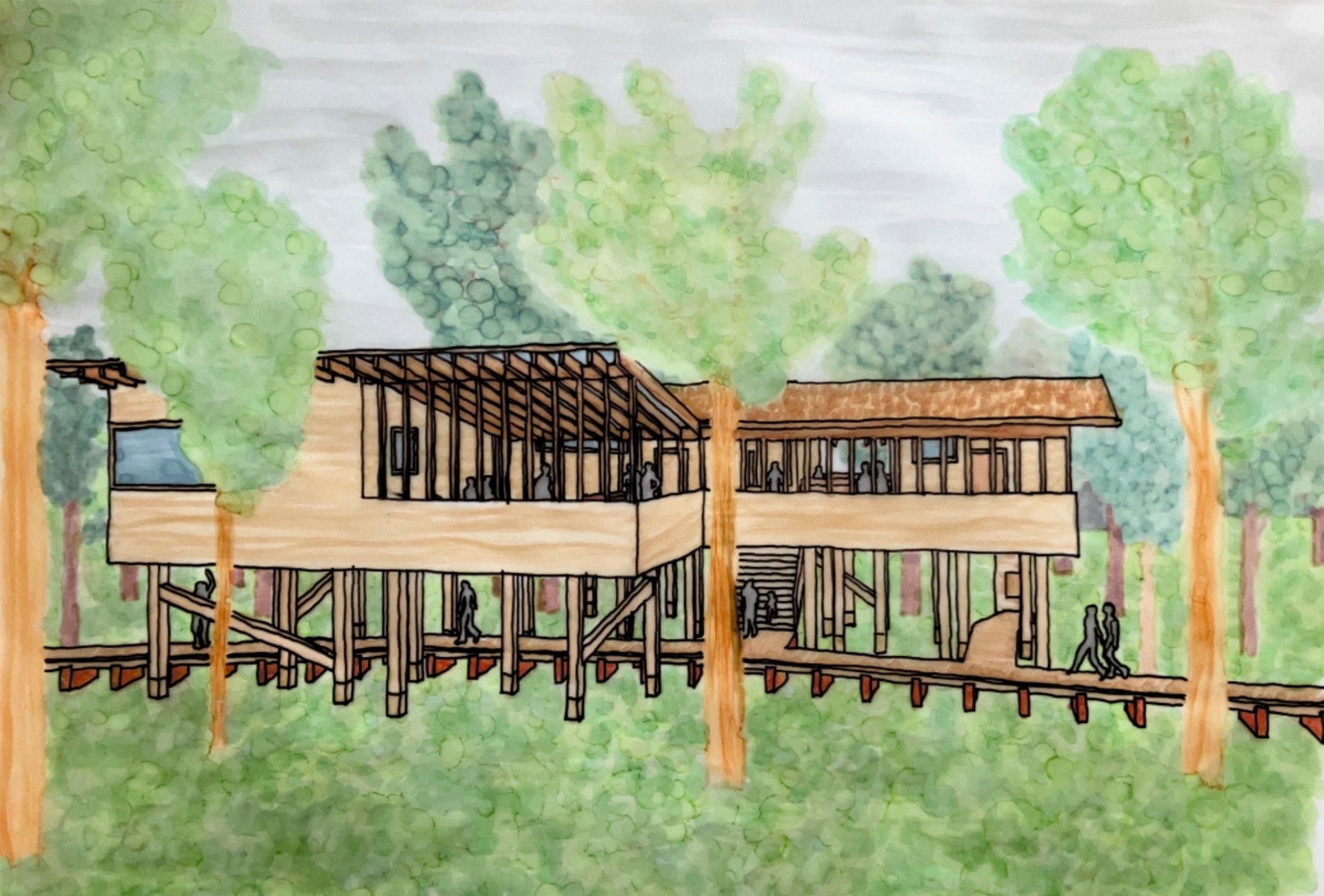
Poem about the embodied experience
I will take you on a journey. You are in Tallinn Estonia, in Kopli to be precise. A neighborhood with potential. Opportunity to connect to the sea, nature and each other.
I will take you on a journey. You are in Tallinn Estonia, in Kopli to be precise. A neighborhood with potential. Opportunity to connect to the sea, nature and each other.
You are strolling down the street of Kopliranna, the road to the sea. As you gently approach your destination, you hear noise, people chatting, laughing.
You pass a white apartment block while a forest appears. Two small buildings doom up true the eyelashes of the trees. They look sturdy and robust. Yet, they are small and delicate.
As you come closer a path connects the buildings and you decide to follow. The path is made of sturdy wooden planks and slowly lifts you off the ground. You hear your shoes tapping against the planks. Step by step you approach the buildings. They stand on opposite sides of the wooden path. They frame a view. A view where you see a faint hint of clear blue water. Their diagonal roofs mark the air. The first building invites you in, with its higher end of the roof. By falling over, the wooden path it is protecting you from the elements once you step inside. The furthest building aligns its roof similar.
A small market invites you to buy fresh fish, smoked meat or vegetables. The beams of the roof follow a grid, a satisfying pattern appears. The building is made of rough, old bricks. Some of the stones are left out, which makes you able to peek true the walls of the market. The wooden path is marked by a hip high brick wall. The railing creates an intimate space. Your hand touches the wooden finish. Its soft, not cold at all and has the comforting textures of wood. Its connected effortlessly with the wooden columns carrying the roof. A small wooden seat is cut out of the brick railing were one can take place. You buy a ticket and some snacks inside the shop and continue your path.
The second building appears. A brick wall connects them to its brother. It guides you to the stunning ocean view. The columns and beams follow a strict rhythm with only the wooden seats as an exception. It is clear and visible how the building is built. Rising from stone, wood to carry the roof. Behind the just not square windows you see the dried vegetables and meat hanging, smoking. You touch the bricks; they are old and used. Their colors are constantly changing where time has touched. They had a life before this one. Maybe the building has been here all along.
The sea beckons as you continue your walk. Suddenly the trees give way to reeds. A long wooden pier stretches across the water. It touches the sea with its toes. You walk to the end and smell the faint scent of salt that is so characteristic of the Baltic Sea. Not invasive, but soft and delicate.
A building in the distance catches your eye. Wooden columns support a harmonica-shaped roof.
It is different from that other building, but somehow similar. They are family.
As you approach the building, a small reed surrounded terrace appears where the first outdoor enthusiasts are sipping their black coffee. The high roof shields them from the wind. Reed divides the pool into two halves, one for resting and socializing and the other for active swimming. Again, the path guides you the way into a mysterious corridor. The hall is covered by the square beams that support the roof.
The path is marked by repeating wooden columns that lead you along the building. The columns are not repetitive, but intuitive, playing with privacy and visibility.
Birds sing their songs as you take a path into the forest. Sounds of playing and chatter stumble and silence is all that remains. The trees take your worries into their roots. Oxygen fills your lungs. A delicate building approaches. Scraped wood fills your nostrils. It is as tall as the smallest trees. Its sturdy legs support their branches. It must be in the crowns.
The square wooden roof now serves as a floor. You can walk under it. You take the softly shaved stairs.
The door handle is a small twig that you pull. An intimate entrance makes you take off your shoes and enter a dressing room. Undressed, you wrap yourself in a towel. One last bathroom stop and its corner window reveals you the first crown forest view. Your jaw unclenches.
Showering in the small bathhouse, where a large horizontal window shows the crown of an old birch tree. A chin high wall lends privacy to those showering. The walls are built with big heavy spruce logs. They are shaved and unfinished, they have so many varieties if you look closely. The floor feels smooth and somehow wobbly. Tiles show proudly their vivid colors. As you sit down on a wooden bench to cleanse yourself, slowly warming up to prepare for the sauna, you have lively conversations with others. The wood of the bench is different from the wooden logs the buildings is made of. It's a darker species, more delicate, comfortable to sit on. You notice the window frame is the same.
After the sauna filled your body with heat, you decide to cool off in the tiny plunge. Situated between the spruce log walls you gently walk in. You sit down and wrap your body in cold. Your hands touch the uneven tiles. Small textures tickle your body.
You look closely. Fingers and other human partials have touched the tiles when they were made. Their colors make your dreams grow bigger. You exhale and sit down on a small, tiled bench in the cold water.
You look up, clear blue skies.
After repeating the rituals, you make way for the open, roof lighted social space. Wooden columns mark the boundary between the building and nature. The sun sets in pink and orange. You feel enlightened. What a day.
As you later slowly leave the forest sauna a distant path leads to yet another timber building. Covered in the field, it radiates mystery.
It floats gently above the reeds. You continue this path between reeds and forest.
Once you're back at the market you buy a fish for diner. As the timber planks gradually bring you back to the road, you feel so different. You feel connected.